
Бесплатный фрагмент - The Most Detailed Travel Guide around Irkutsk
All the attractions with the route of movement & addresses
Introductory Words
Dear guests and residents of the Baikal region, here is the most detailed guide to the capital of Eastern Siberia. This includes the brightest and most unusual sights that will help you get acquainted with the most interesting moments from the past, present and future of Irkutsk. Almost 75 kilometers of routes along more than 90 streets of the city.
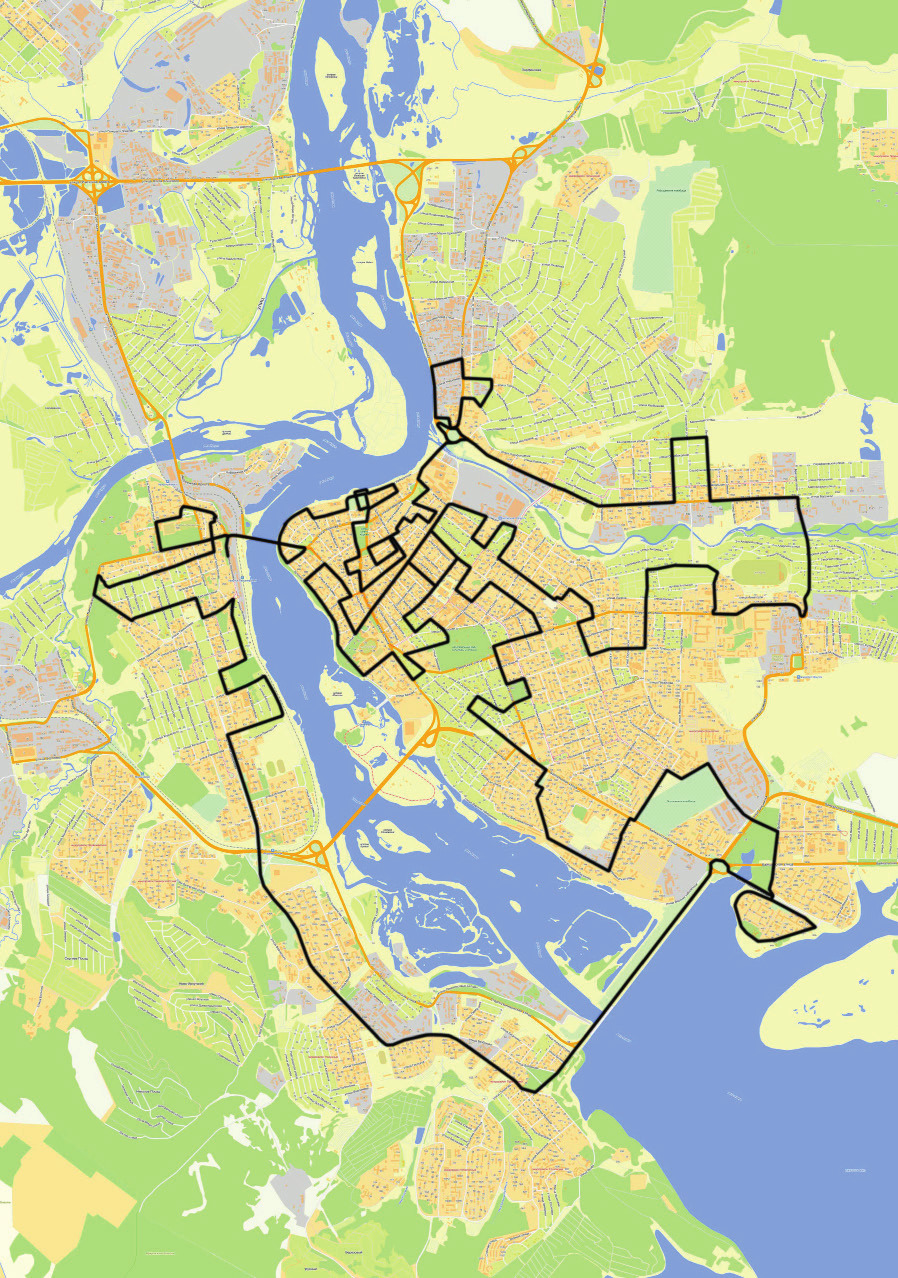
This book is my appreciation and gratitude to my historical homeland, as well as the result of ten years of work as a guide on various thematic excursions. Thirteen generations of my family live on Irkutsk land. Twice my ancestors in the 19th century became the mayors of Irkutsk. With my work, I hope I will be able to thank my hometown for everything that it has done and created for my family. I would like to believe that this book will help you fall in love with Irkutsk the way I do.
Irkutsk Railway Station
We begin our journey from the building of one of the most beautiful railway stations in Russia, built in 1907 by the architect V.I. Kolyanovsky. The rails of the Trans-Siberian Railway came to Irkutsk in 1898, and this was a great event, not only because it connected the city with the central part of the country, from which the city was separated by thousands of kilometres of poorly developed territories, but also as it led to a doubling of the population and the opening completely new perspectives.
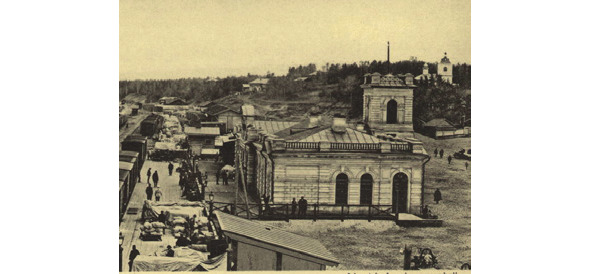
But it could be left out from the “great steel road”, like Tomsk, Kolyvan or Nerchinsk, but the mighty mountains of Lake Baikal did not allow this to happen. After six geotechnical expeditions (from 1887 to 1902), it was decided to build the Trans-Siberian exactly through Irkutsk, despite the recommendations of Emperor Alexander III to avoid the capital of Eastern Siberia.
It is no coincidence that we begin our journey from here, since the Irkutsk railway station is located right at the foot of Kayskaya mountain, which glorified the city throughout the world with the discovery of the Glazkov necropolis — the largest ancient burial ground in the territory of the modern city.
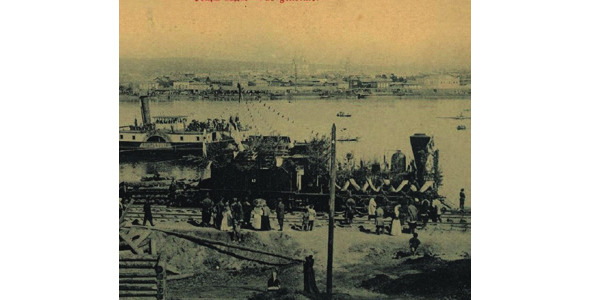
On the whole territory of Eastern, Western Siberia and the Far East taken together were founded as many stone age graves as at the area of the Lokomotiv stadium, which is located nearby the railway. Moreover, this amount is only 2% of the total number of finds, many of which are the high valuable artefacts that adorn more than one collection of museums in Siberia and central Russia.
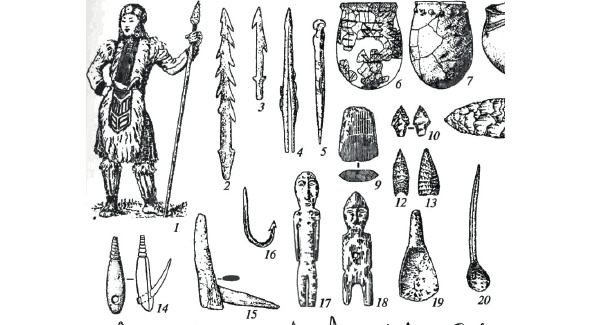
We will continue our movement along Chelnakov street, named after military twice hero of the Soviet Union, General N.V. Chelnokov, who flew more than 270 sorties, killing the enemies in the air and on the ground from Baltic to Black Sea. How symbolic that he was born in Irkutsk on May 9, 1906 which is a day of great victory in WWII. The monument to him was established at the entrance group to the Sverdlovsky district of the city unforgivably late: only on October 2, 2016, to the 110th anniversary of the birth of aviation general.
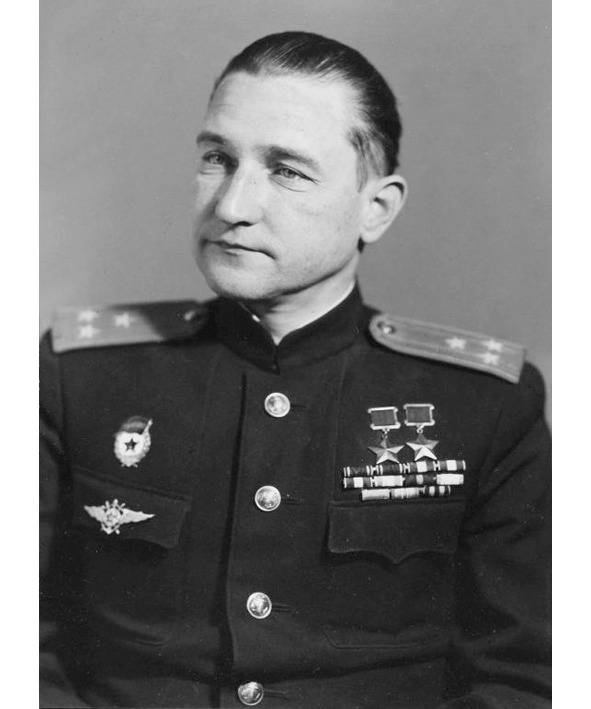
Glazkovsky Bridge
Directly from a small park near the monument, we go to Glazkovsky Bridge — the oldest bridge in Irkutsk over the roaring daughter of Baikal called the Angara River. And although it had a predecessor — the pontoon Nikolayevsky bridge, the remains of which are still visible at the bank downstream (existed since 1891) — a permanent ferry began operating in Irkutsk only in 1936. By the time of completion, it was the most long-span concrete bridge in the USSR.
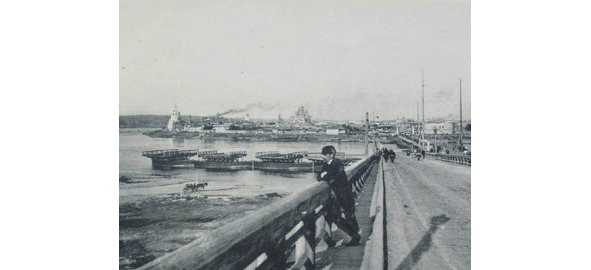
The architect of the bridge was the author of the mausoleum to V. I. Lenin and the tribune on Red Square in Moscow I.A. Frantsuz. And on the penultimate parapet stand on the left, you can still see a sign that this bridge is a monument to V. I. Lenin.
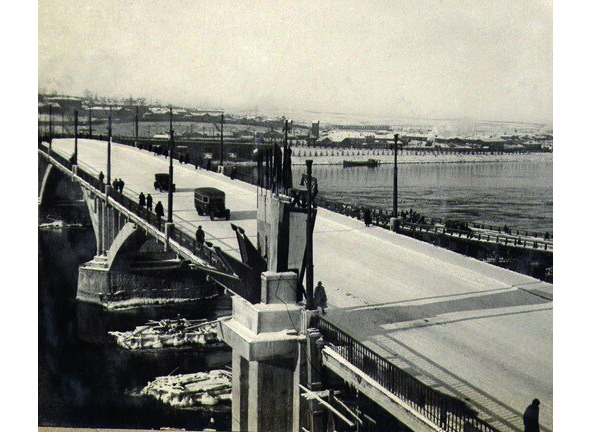
And now we will find ourselves in the center of Irkutsk, where immediately on the right we are greeted by the beautiful Holy Trinity Church, built in the style of the mysterious “Siberian Baroque”. It was consecrated on September 22, 1778 and, despite the fact that it suffered from many floods and fires, it is the only one in the city that has possessed the ancient roofing iron forged in smithy.
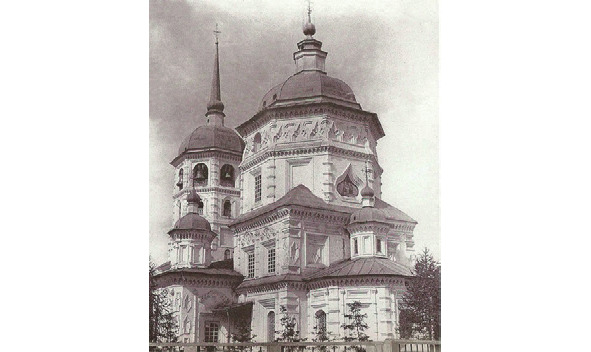
Until the middle of the 19th century, this temple was the only place of prayer for residents of Glazkovsky suburb on the other side of the Angara River, where the Troitsky ferry was arranged. The only planetarium in Siberia was opened in an abandoned church building since 1950, which worked until 1983.
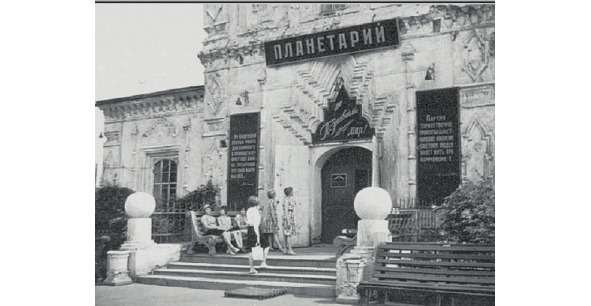
Behind the powerful silhouette of the temple you can see the only church-rotunda in Irkutsk. It was consecrated in the name of St. Gregory of Neocaesarea in 1805 and built according to the project of the famous architect A.I. Losev.
We pass along Chekalov Street and at the entrance to the embankment we are greeted by a monument to veteran of paratroopers, opened in 2018. Then we will turn right and dive under the bridge, where after on the right we will see one of the memorable buildings of Irkutsk — this is the former progymnasium of M.V. Hajduk. Today here is a center and a service for the preservation of the historical and cultural heritage of the Irkutsk region, as well as the Cosmonauts Square which is located nearby.
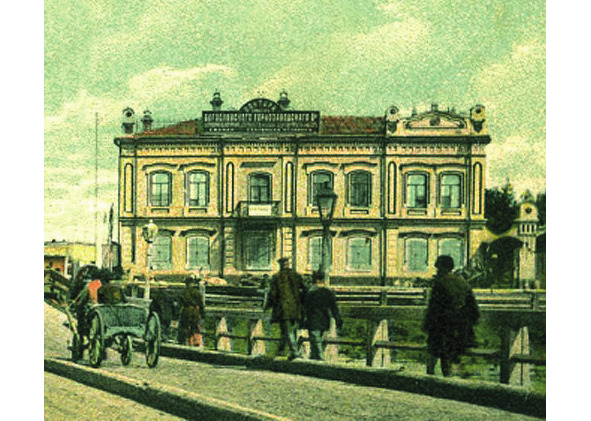
The building located very picturesquely at the bend of the river. Exactly here was the entrance to the pontoon bridge and to the city once rested against the bank, and one of the floats is still visible in the water. In the troubled days of the Russian Civil War in December 1917 and 1919. here took place some of the bloodiest battles in the history of Irkutsk, and on March 7, 1920, next to this place on the ice of the Angara River, an ice triumphal arch was installed in honour of the soldiers of the 5th Red Army who were entering the city in victorious formation.
On the right we pass a waste-ground, where the complex of the most famous public baths in the city opened in 1896 by the famous Irkutsk homeowners N.P. Kurbatov and G.I. Rusanov and became the first such establishment where electricity was installed. For a long time Kurbatov Baths were one of the main resting places for Irkutsk residents.
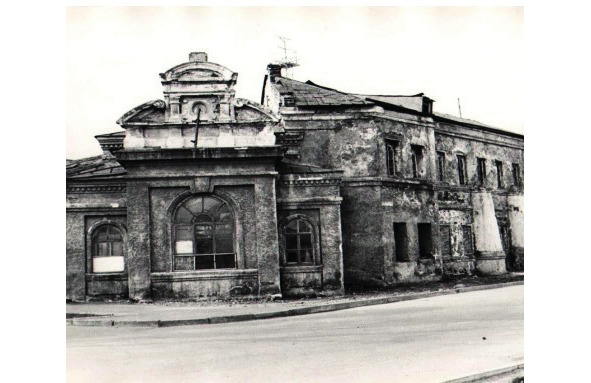
On the next intersection on the right a monumental buildings attract attention — all this once belonged to the first yeast plant in a history of Siberia, the owner of which since 1882 was a J.M. Pertsel.
CESovskaya Embankment
CESovskaya embankment street, named after the oldest city power plant that operated in this area of the city for almost a century since 1910. It ends next to unusual building in the Stalinist Empire style with a hemispherical end on the northern facade. Here once was the one of the most outstanding temples in Irkutsk — Church of Sts. Procopius and John of Ustyug. It had characteristic stylistic features that later became dominant in the cult architecture of the city and determined the identity of the local school. Had been built in 1767, it was destroyed in the 1930s.
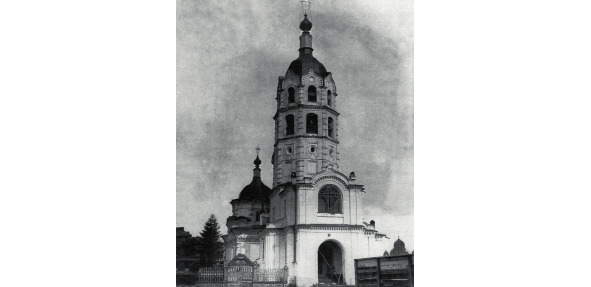
In the last years of the church existence, since 1932, a direction of tea-packing factory which produced a half of all tea in the USSR was placed here. Today nothing reminds of the temple or plant, as well as of the building of the oldest power station in Irkutsk. The building of the factory which was the only enterprise in the country that produced tea during the WWII, was demolished, and one of the city banks is located in the former warehouse building. Also it is planned to construct one of the new architectural landmarks of Irkutsk on the site of the old power plant.
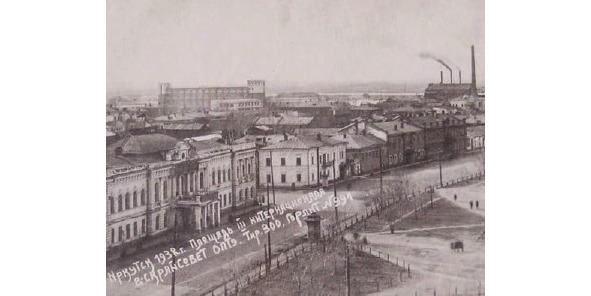
We move on and passing by “Lovers’ Square”, which is comfortably located right opposite one of the most beautiful wooden mansions in the city — this is the estate of the merchant and deputy of the Irkutsk City Duma I. I. Ogladin.
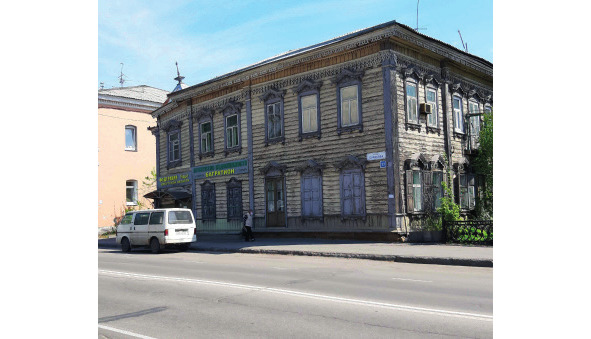
Immediately after it there is an interesting stone building, where from March 13, 1807 and until April 19, 1868 was the main Siberian office of the Russian-American Company, as evidenced by the memorable plate on the wall. Irkutsk, due to its favorable location, was once the center of Russian America or the American district of the Irkutsk Goberny with the center in Novo-Arkhangelsk on Alaska (nowdays Sitka, USA).
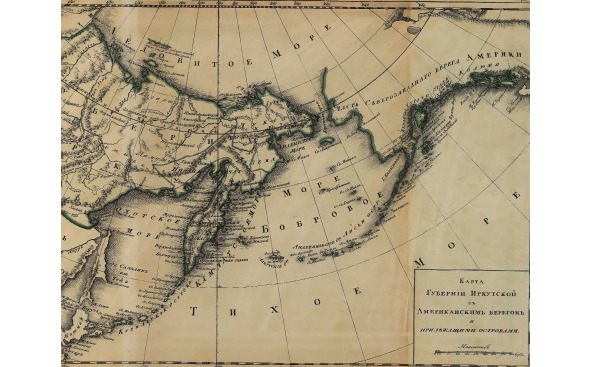
And now the “snow-white frigate” appears ahead — the beautiful Savior Church, which marks the exact place where the city of Irkutsk was founded. Let’s take a closer look at it, because this is the only building that has survived since the time of the wooden fortress, which was established on this place on July 16, 1661. Today from this date we count the official date of the foundation of Irkutsk, despite the fact that the city was founded on the site of an aboriginal settlements earlier (in 1620 and 1652). In the past, at the mouth of Irkut River, which flows here into the Angara, there was already a Russian winter hut for collecting “yasak” (tax with the furs of wild animals).
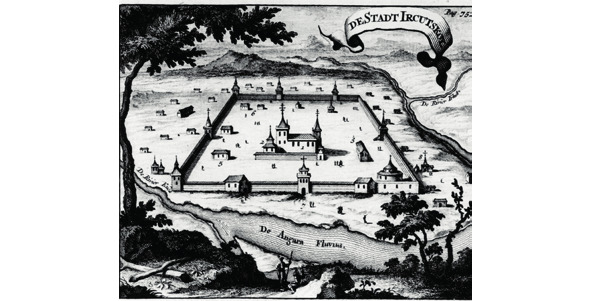
Church in the Name of the Savior
Let’s get meet the Church in the name of the Savior Image Not Made by Hands (Mandylion). Here once was kept that religious banner, which as a standards was brought to Siberia by Cossacks-pioneers. The temple was created by the Moscow architect M.I. Dolgikh, who not only built the building in the canons of the old Russian style, but also gave it a special local flavor.
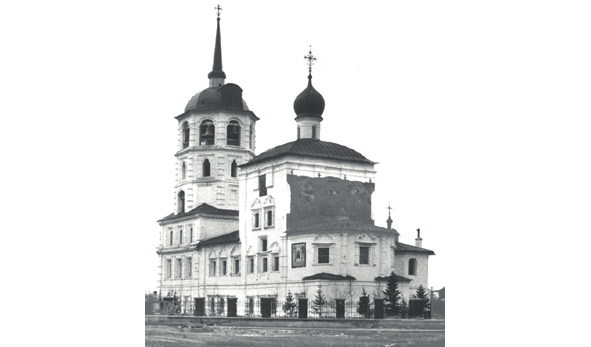
Initially, the church was built right into the wall of a wooden fortress and on the first floor there was a warehouse for the state treasury, so people entered the temple which was located on the second tier through a wooden promenade-gallery. There is still reminiscent of that with the triangular ornaments between the first and second floors, where the balks were inserted, and on the second tier there are doors which leading to nowhere. On the south side of the temple on the second floor, you can still see in the window bars the date when the church got a bell tower (“1760”) so that was a time when the temple acquired a modern face.
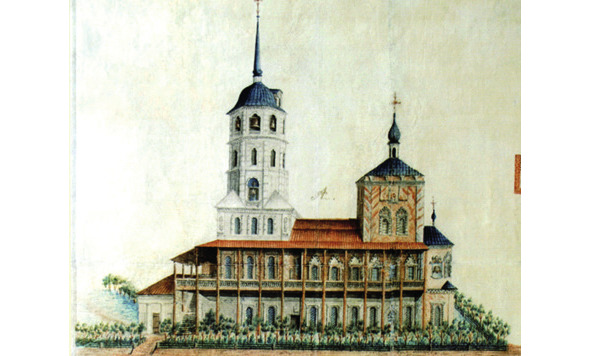
Moreover, in 1824 the Church of the Savior was painted by an artel of Moscow icon painters and until the end of the 20th century it remained the only painted church in entire Siberia. It was not customary to paint temples in the local climate because of the sudden changes in temperature that ruined any paint. The frescoes amazingly preserved thanks to the fact that in Soviet times they were covered with four layers of plaster and under this protective cap they spent almost half a century.
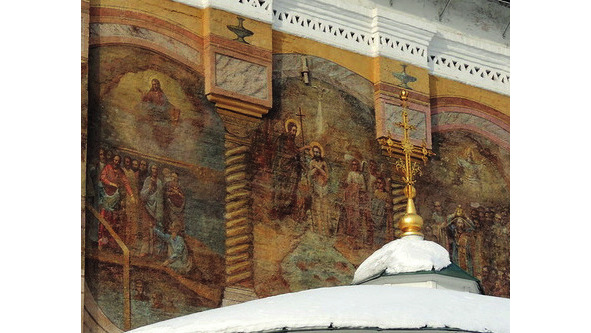
In the murals, from left to right you can see scenes of christening the local Buryat population, the image of Epiphany, as well as the rite of passage of the first bishop of Irkutsk and Nerchinsk known as St. Innocent Kulchitsky. In addition, on the southern wall of that temple you can also see the icon of the Savior Not Made by Hands, images of St. Nicholas and St. Mitrofan of Voronezh.
Surprisingly, Orthodox churches adjoin a monument to the “flaming Gothic” a operating Catholic church in the name of the Assumption of the Blessed Virgin, which was built on this site in 1883 by the project of I.J. Tamulevich mainly for the descendants of exiled Poles at least 20 thousand of which passed through Irkutsk during 19th century. The names of many of them today are in the denotation of streets, mountain ranges and various types of plants and animals (Dybowski, Cherski, Chekanovski, Godlevski and many others).
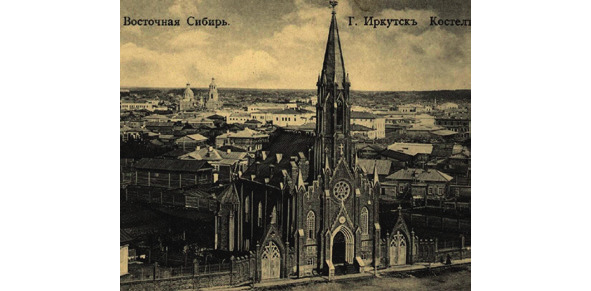
The temple was consecrated personally by the “Apostle of Siberia” Christopher Szwernicki, who was the first parish priest of the diocese of St. Joseph — largest geographical Catholic bishopric in the world (area of about 10 million km2), the center of which is still here in Irkutsk.

In addition, according to legend, after the fence of that temple was buried P.P. Duntsov-Vygodovski — the last one of first Russian revolutionaries (Decembrists) who left in Siberia (died in 1881). And in 1951 here held the first industrial practice the world famous film director L.I. Gaidai at the East Siberian newsreel film studio.
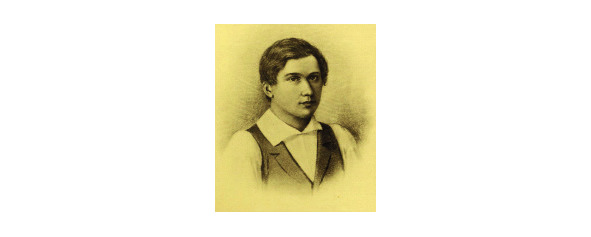
Inside the church today there is a real organ (27 registers and 1849 pipes), which was one of the four best in the USSR (along with the organs of Pitsunda, Riga and Kaliningrad). It was produced at the expense of the Irkutsk people by the famous German company “Wolfgang Schukke — Ortel Gebau”, made according to the drawings of J.S. Bach in Potsdam and installed in Irkutsk in 1978. Today, organ music concerts are held here weekly.
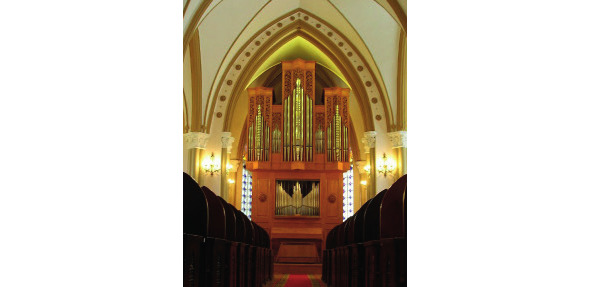
Nearby to the Savior Church, where weddings are often held today, since 2011, there is a monument to the Holy Princes Peter and Phevronia of Murom — the patrons of family, love and marriage in the Russian Orthodox Church. A similar monuments can be seen in dozens of other cities in Russia, and the closest one is located in Angarsk, but in the capital of Eastern Siberia it is extremely popular. Newlyweds come here to ask for happiness in family life and first-borns; children — about brothers and sisters; old people — about grandchildren. It is believed that if you would rub the nose of bunny sitting next to Phevronia’s feet, then the wish will certainly come true.
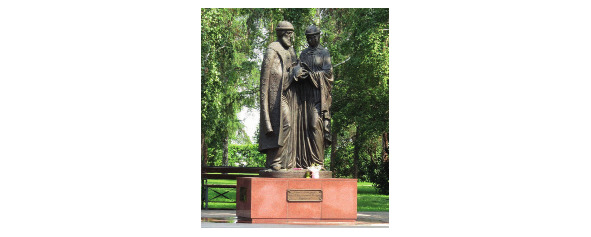
Memorial of the Eternal Flame
Walking around the site of the city’s foundation, we cannot pass by the Eternal Flame Memorial, which is rightfully considered one of the largest in Siberia. It’s appeared in Irkutsk quite early — to the 30th anniversary of the Great Victory in 1975, and two days later the students of the 39th school were at the Post at the Eternal Flame. The guard of honour is still carried out by ordinary pupils, and this tradition has never been interrupted for almost half a century. Perhaps that’s why in 2007 Post Number 1 in Irkutsk was awarded the 1st degree Medal of St. Alexander Nevsky.
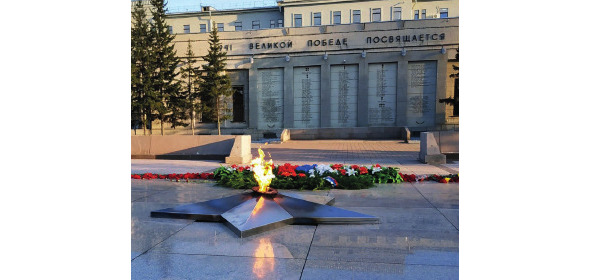
Around the Eternal Flame there are plates made of Baikal marble on which you can see the names of countries not only in Europe, but also in Asia — from France to Korea out of where the land was brought here stained with the blood of Siberian soldiers. Behind the memorial there is an annexe to the building of the government of Irkutsk region, where you can read the names of 134 Heroes of the Soviet Union participants in the Great Patriotic War associated with the capital of Eastern Siberia, as well as plates with lines from the Irkutsk poet and writer M.D. Sergeyev, telling about the contribution of the region to the victory.
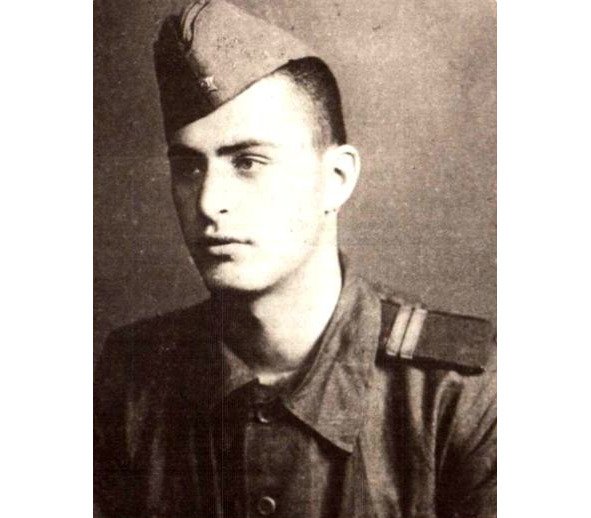
214 thousand natives of the Irkutsk region went to war and every third did not return home (79 thousand), five pilots from Irkutsk made an air ram, three daredevils covered an enemy machine gun with their bodies. 22 large enterprises, about 10 trusts and raw material bases were evacuated to the Irkutsk region. There were 29 hospitals on the territory of Irkutsk, where more than 102 thousand soldiers were treated, less than a thousand of which were unable to survive from their wounds. The Irkutsk people sent 160 wagons of parcels and warm clothes to the front (a train more than 2 km long), raised funds for the construction of 6 tank columns, and contributed more than 1.2 billion rubles to help the front.
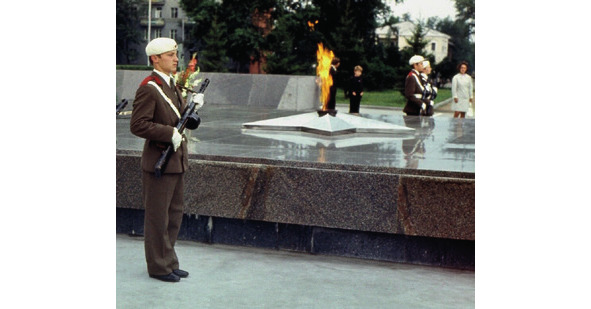
The building of the Irkutsk Region government rises above the memorial complex. From here it’s controlled the fifth biggest region of Russia (area of 774,846 km2) with a population of less than 2.5 million people. The building itself was completed in 1959 by the architect K.I. Guryev, but its construction lasted for 20 long years, because its creation was only a reason for the destruction of the symbol of prosperity of Irkutsk at the end of the 19th century — the Kazan Cathedral.
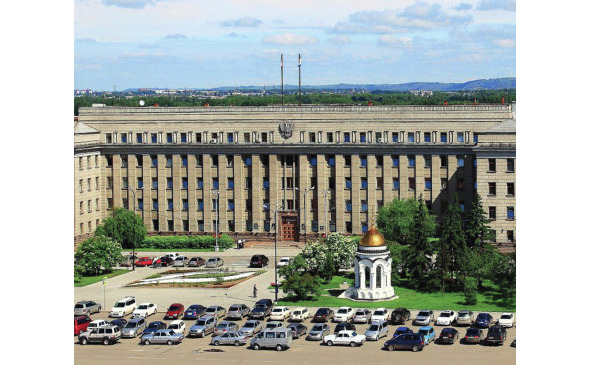
This temple was the fourth largest religious building in Russia. It accommodated five thousand parishioners, and its height reached 61 meters. The construction of the temple took a long time (1875–1894) and cost to Irkutsk people almost a million golden rubles. The best architects of the region took part in the creation of the building project as V.A. Kudelsky and H.V. Rosen.
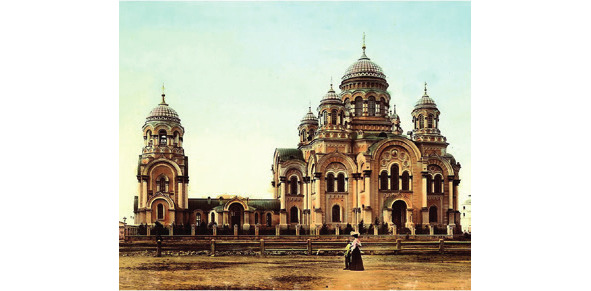
In August 1932, the cathedral was thoughtlessly blown up together with living people inside, who tried to defend the symbol of the wealth of their city. After the residents of Irkutsk refused to participate in the clearing of the debris, and a train with collective farmers was sent from Ukraine, who began to dismantle the church bumping into corpses. There were so many bricks that, despite the fact that it was used for the construction of the first five-story building in Irkutsk, the State Bank building and the access roads of the Glazkovsky bridge. The level of the surrounding area arose by almost a meter, when the broken material was flattened. That’s why the townspeople for a long time called this place as “Red Square”. On the site of the cathedral, nothing was ever built, because the walls of the governorate administration are more than 4 meters from the nearest walls of the destroyed church.
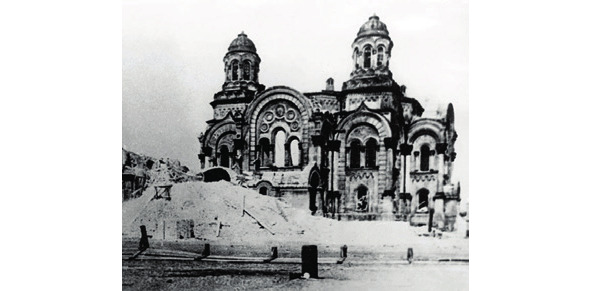
From here we will walk along the veterans’ alley, because this whole park was created in its modern form in a memory of the 50th anniversary of the Great Victory in 1995. But this does not mean that before that it was empty. Since 1824, the Spassky Garden was laid out here, which was and still in use as a favourite place for festive fireworks.
Here we will see a monument to one of the three twice Heroes of the Soviet Union associated with the city of Irkutsk. Bust to the famous general A.P. Beloborodov in Irkutsk appeared back in 1954 on Labour Square and was moved here to the 50th anniversary of the Great Victory. It was his 78th Infantry Division that met the Nazis near Istra in the battle for Moscow in the winter of 1941 and stopped Hitler‘s Army first time ever and saved the freedom of Russia in an unequal battle. He received his first “Gold Star” for the liberation of Vitebsk on June 26, 1944, and the second for the fact that his soldiers were the first to break into the territory of the impregnable fortress of Koenigsberg on April 9, 1945. A.P. Beloborodov was buried in Moscow at the “Snegiri” cemetery, next to the soldiers of his division who died in the fall of 1941 during the defence of Moscow, but part of his ashe is under the memorial plate at the Irkutsk memorial of the Eternal Flame.
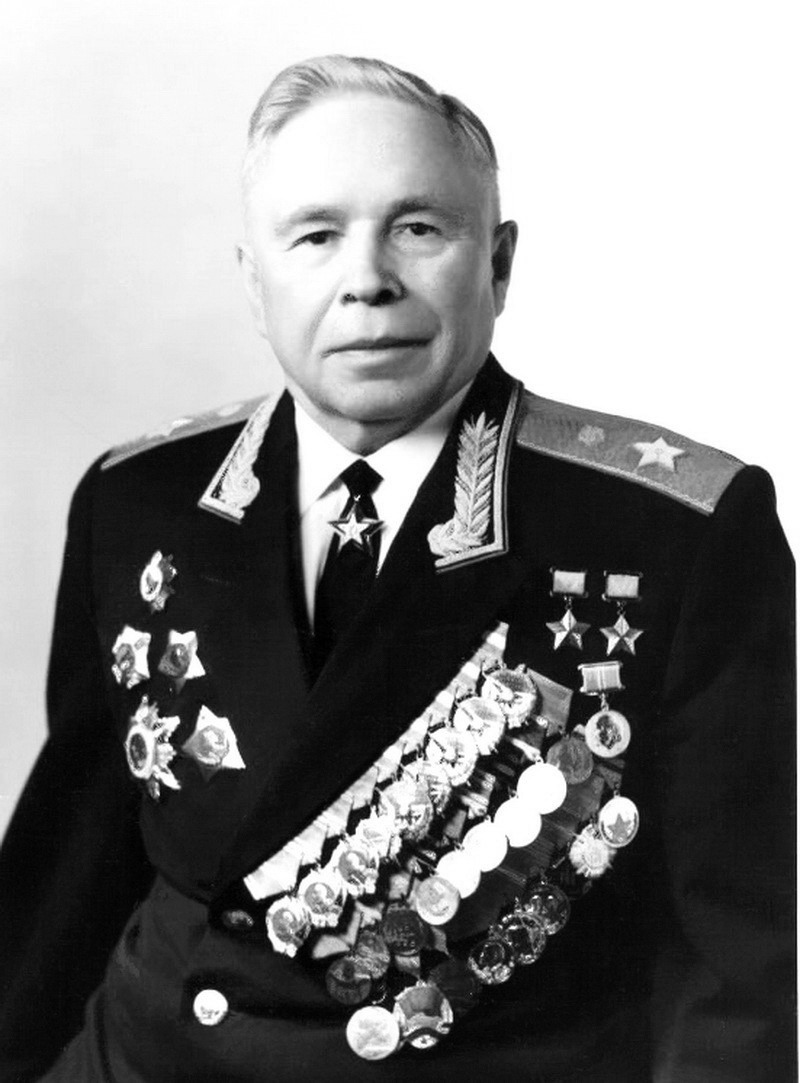
The third twice Hero of the Soviet Union does not yet have a monument in Irkutsk, because this is the last living member of the first cosmonaut corps of the USSR — B.V. Volynov, who made the first docking ever between ships in open space on January 15, 1969. Two more Irkutsk residents visited the Earth’s orbit: A.A. Ivanishin and D.Y. Kondratyev. Considering the presence in Irkutsk of the Institute of Solar-Terrestrial Physics and the Institute of System Dynamics and Control Theory of the SB RAS, as well as plants for the production of space equipment, we can easily call the capital of Eastern Siberia “the city of cosmonauts.”
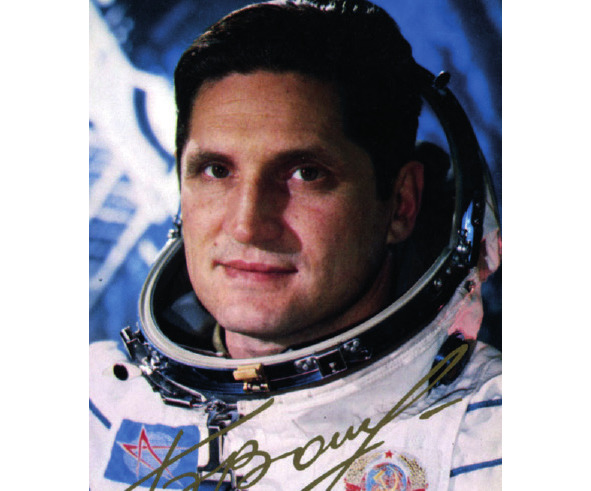
Irkutsk is a truly amazing place on the map of the globe. Let’s climb onto a small bridge, which rises 7 meters above the level of the roadway, which, by the way, equal to the height of the walls of the old Irkutsk wooden fortress, and look at the panorama that opens before us. At this point, the brown waters of Irkut River merge with the purest stream of the Angara. In a good weather, and especially in winter, you can see stones at the bottom of the river, despite the 6-meter depth. And the speed of the current is so fast that even in 40-degree frosts the river does not freeze. Although, until January 1952, the river was seized by ice, starting from this place, which caused frequent and serious winter floods. As a result of these cataclysms, the water went deep into the city sometimes up to 400 m, leaving behind an ice captivity. Today the Irkutsk hydroelectric power station has regulated the flow of Baikal waters and the Angara has stopped freezing and flooding.
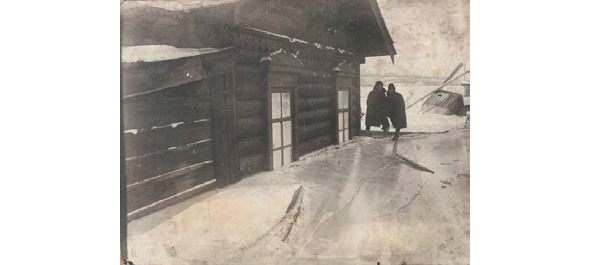
We are not only at the confluence of two great Siberian rivers, we are at an ancient crossroads on the path of human migration across the globe. This movement began about 2 million years ago in eastern Africa. On its way, humanity made stops, and the first such crossroads was the territory in the valley of the Indus River, where mankind, about 90 thousand years ago decided to divide its ways and move towards Europe, Australia and North Asia. The second such fateful place was next to the future Irkutsk. 50 thousand years ago, at this place, people split up again, making the final decision to move towards North America, the Far East (Manchuria, Korea, Japan) and the Urals. Since then, the place of Irkutsk has been inhabited for decades of thousands of years and has never been abandoned by people for a long time. Over the years, new rivers and mountains have appeared here, hundreds of nations have changed. And if there are a lot of ancient cities in the world, then there are only four places like the capital of Eastern Siberia on the Earth map: Tbilisi, Paris, Tokyo and Lvov.

No wonder that the name “Irkutsk” can be literally translated from the ancient Turkic language as “eternal”. From Mongolian “эрхYY” the name of the city could be interpreted as “wayward”.
Now let’s walk up from the embankment to the monument towering over the place where in the summer of 1661 Cossack’s rowboats docked on the bank with the intention of building a new city. It was installed in 2011 in memory of the founders of the city of Irkutsk: Yakov Pokhabov, Petrushka Tyulshin and the Yeniseisk commander Berezovsky. They did not choose this place occasionally, but made that because it was surrounded by water on all sides: from the north — the Angara River, from the east — the Ushakovka River, from the south — a small lake, from the west — impenetrable swamps. Since then, the landscape of the settlement has changed a lot and today only waterways limit the heart of the city.
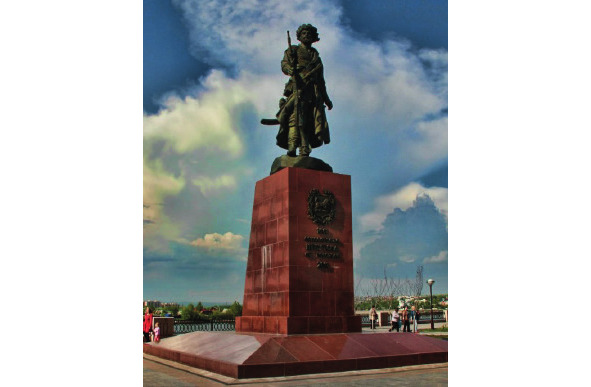
Once on the site of this monument there was a picturesque Tsaren Pavilion, installed on the day of the arrival in Irkutsk of the heir to the Russian throne, Prince Nikolas, on June 23, 1891, who stayed in Irkutsk for two days. Besides him from the royal family, the city was visited by Alexey Alexandrovich Romanov in 1872 and Konstantin Konstantinovich Romanov in 1909.
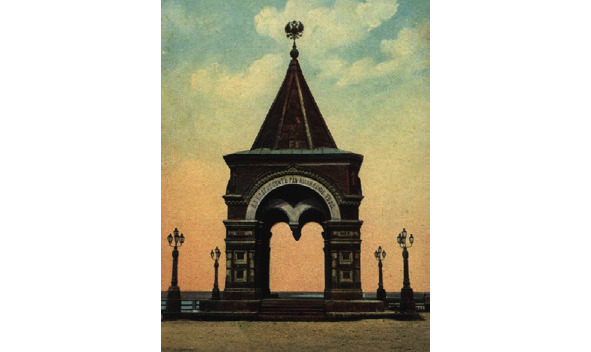
Epiphany Cathedral
And so, we are standing at one of the main temples of the Irkutsk-Angarsk diocese and the first church built outside the wooden fortress — this is Epiphany Cathedral. To this day, it is one of the most unusual religious buildings in Russia.
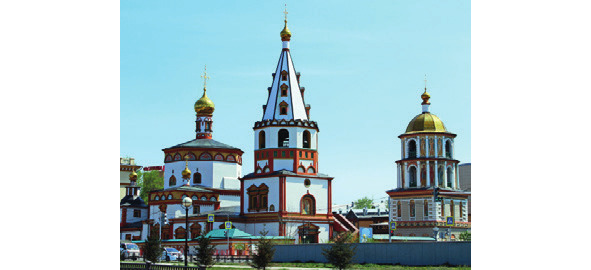
Let’s start with the fact that creating of that temple began in 1718, when officially any stone constructing was prohibited without a special buyout, because all the material went to the making of St. Petersburg, but the Irkutsk residents did not spare almost 3 thousand rubles for bricklayers. However, since they paid, they decided that they could be content with the principle: “it’s too high to God, and too far to the Tsar” — and started to build this temple in violation of all the rules and regulations of Orthodox architecture.
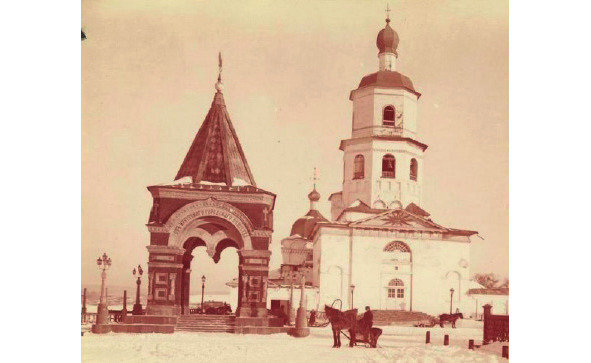
First of all, a tent-roofed bell tower appeared, which became a forbidden fruit for builders already at the end of the 17th century. But here the nature was not on the side of the architects. And in 1742, just a year after the completion of the work, during a strong earthquake, the tent roof collapsed and a wooden “onion” with a spire was arranged in its place in 1746.
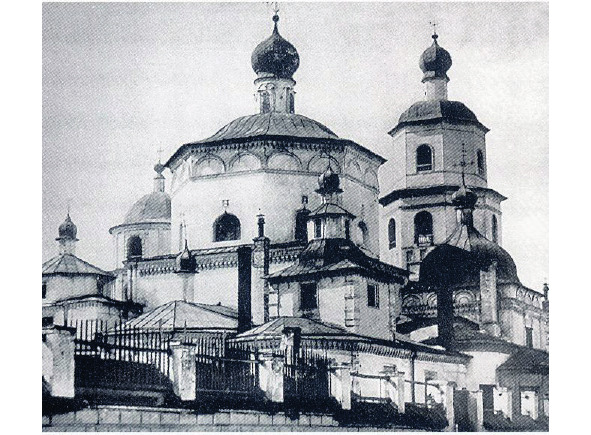
A second moment is that the temple has two bell towers, one of which was built as a result of the fact that the old belfry, located above the main temple, could not bear the weight of the largest bell in the history of Irkutsk weighing 12.5 tons, which was cast especially for it in 1797. And Irkutsk people who were responsive to any charitable cause, without hesitation, decided to build another bell tower nearby, which was consecrated in 1816.But the bell did not served long. On December 31, 1861 in the afternoon, it rang out for the last time, when the echoes of the Kudara earthquake on Lake Baikal (about 7 Mw) reached Irkutsk. The bell fell off the yoke, split into pieces, and, since material was required to restore many other structures in the sufferer city, it was poured onto metal.
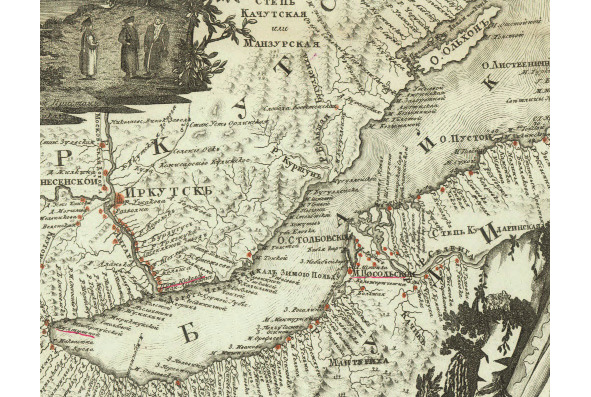
Thirdly, on the walls of the temple you can see the most interesting ornaments that gravitate towards the traditions of Buddhism and even paganism. In addition, the Epiphany Cathedral is one of three churches in Siberia, where you can find glazed tiles with images of Slavic mythology: basilisks, unicorns, centaurs and even the famous bird Gamayun.
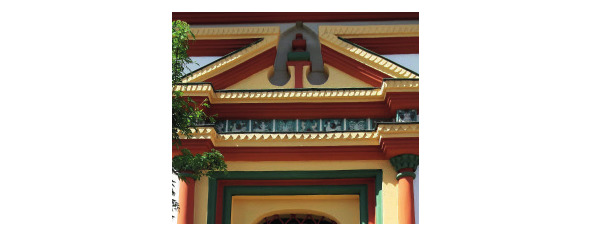
The church suffered very seriously from the activities of the Irkutsk bakery, which had been located here since 1934. Therefore, in 1967–1985, during the restoration of the church by the Moscow architect G.G. Oranskaya, it was decided to remove the most damaged later layers, dismantle the bell tower and return the monument to its original appearance. At the same time, began restoration of the paintings, which continues to this day.
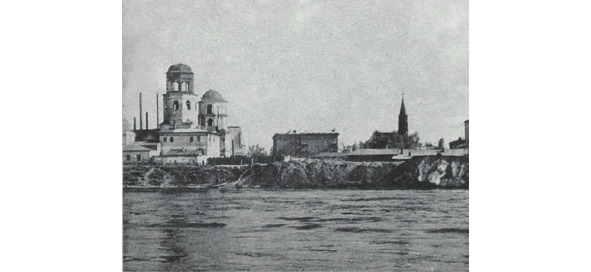
Opposite the cathedral, you can see busts of the most famous saints of the city of Irkutsk, because ten holy men blessed this land with their steps: Righteous Elder Gerasim of Irkutsk, St. Innocent Kulchitsky, St. Sinesy Ivanov, St. Sophronius Crystalevskiy, St. Innocent Veniaminov, St. Meletius of Kharkov, St. Gerasim Dobroserdov, St. Meletius Yakimov, Holy Martyrs Bishops Parthenius and Ephraim.
Today, there are only three sculptures here, but every year a new monuments appear, starting in 2017, when it was 220th anniversary of the birth and 40th anniversary of the canonization of “Apostle of Siberia and America” Saint Innocent of Moscow. In 2018, on the 100th anniversary of the glorification, a bust of St. Sophronius Crystalevskiy appeared, and a year later, on the 215th anniversary of the canonization — the image of St. Innocent of Irkutsk. I would like to believe that this will become a good tradition.
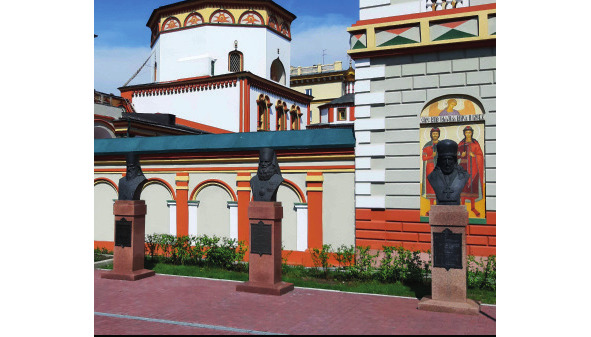
Moscow Gate
We will continue driving along the downer embankment of the Angara River. On the way, we will meet a monument to the teacher by the sculptor I.E. Stavsky, which appeared here in 2016 directly opposite the building of the Pedagogical Institute of Irkutsk State University (ISU). The faculties of this educational institute occupying many old buildings in the city. For example, this faculty received for use the building of Old Irkutsk Theological Seminary, built in 1790, where graduated such people as St. Innocent Veniaminov and St. Gerasim Dobroserdov. In the past, this entire quarter was covered by a huge Bishop’s Courtyard, on the site of which several residential houses and buildings of the Irkutsk bakery factory were built in Soviet times.
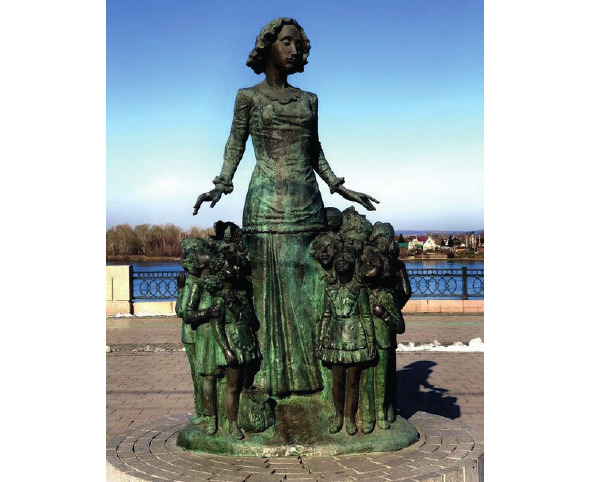
From time immemorial and up to the end of the 19th century, two ferries operated on this part of the Angara embankment, which in fact connected Irkutsk with the rest of Russia, as soon as there was no other way to the East. Since 1731 at this point ended the longest road on Earth of that era — Moscow Tract (5672 km). Further from Irkutsk started the tracts to Okhotsk on Pacific Ocean (3988 km) and to Beijing (3216 km).
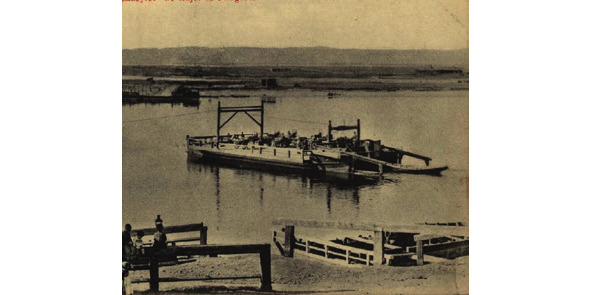
In memory of this and on the occasion of the celebration of the tenth anniversary of the reign of Russian tsar Alexander I in 1811, a triumphal gate was laid here. Although the authorship of this amazing construction for the province is attributed to the provincial architect J.A. Kruglikov, but he could hardly have guessed such an interesting decision himself.
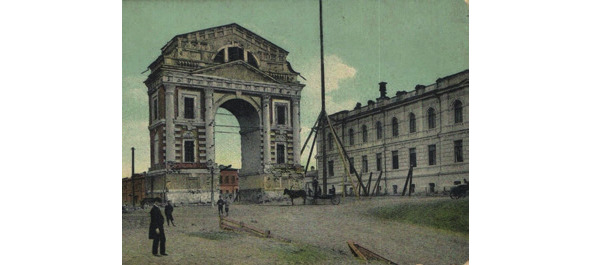
And, in fact, the gate was built by the French road engineers P.D. Bazaine, J. А. Fabre, C.M. Potier, A.M. Destrem, who were exiled to Irkutsk. They could hardly suspect that they had begun construction of the symbol of great victory of the Russian army over Napoleon in the Great Patriotic War of 1812–1814. After all, it was through this triumphal arch that the first Irkutsk veterans returned home, and the Moscow Gate became the first attraction that met travellers at the entrance to city.
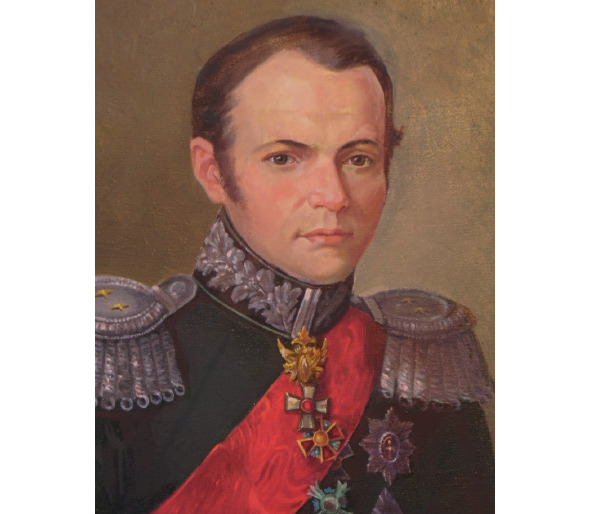
It remained the only triumphal arch in Russia beyond the Urals until gate were dismantled due to disrepair in 1928. There is a memorial sign at its place today. Nearby in 2011, at the expense of Irkutsk businessman E.G. Devochkin, the new Moscow Gate was reconstructed.
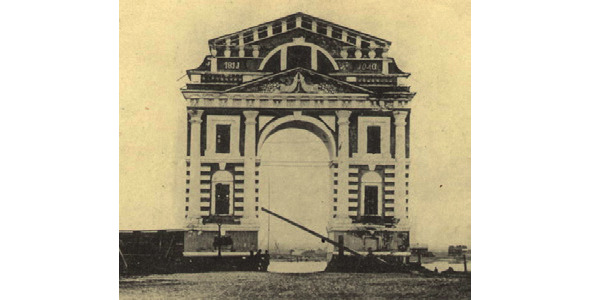
If we recall the origins of the military glory of Irkutsk, then in 1786 the Irkutsk Dragoon Regiment was created, which became the first military unit in the history of the capital of Eastern Siberia. Its most famous general was A.A. Skalon, which died a heroic death in the battle for Smolensk on August 5, 1812.
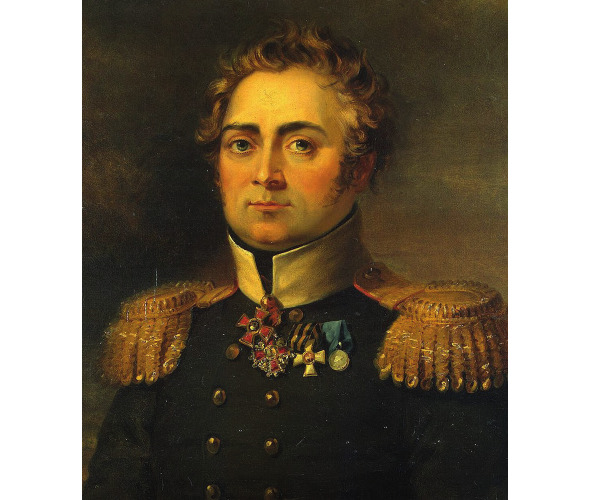
At first there was a very cautious attitude towards the Siberian troops and they were always kept in reserve. However, due to the fact that most of the battles of the Napoleonic wars took place on the brink of defeat, and they had to use reserve units, Siberians more and more began to declare themselves. On February 8, 1807, the invincible army of Napoleon in the Battle of Preussisch-Eylau suffered its first defeat, largely thanks to the Irkutsk Dragoon Regiment. Later, in the decisive battle in Russia near Borodino, the Irkutsk dragoons repulsed the last attack of the French cavalry at 3 o’clock in the afternoon, and the battle ended there.
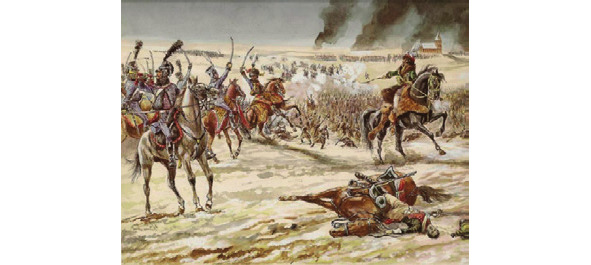
From January 1813 the regiment was reorganized into the Irkutsk Hussar, and its forces were used in the personal protection of Russian Marshal M.I. Kutuzov, and during the “hundred days” of Napoleon, it was transferred to France, where it worthily completed the era of the Napoleonic wars. Due to the fact that the Irkutsk regiment was united with the Moscow one, many noble sons served in it, such as the poet and diplomat A.S. Griboyedov, composer A.A. Alyabyev, architect of the “new Moscow” J.I. Bové.
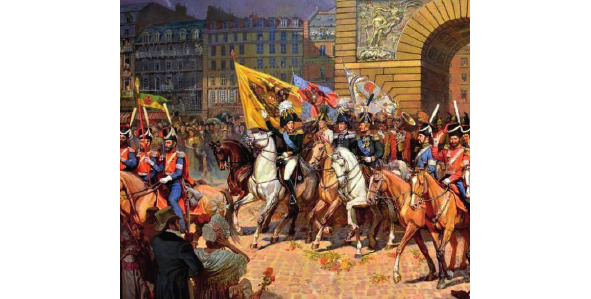
Turning to the right, we find ourselves on the December Events street, which is named after the fierce battles that were fought here from December 21 to December 30 in 1917. As well as this street was the last known border of the Russian Empire — the so-called “Ushakovsky Front” passed here in winter of 1919.
In the past, December Events Street had different names: Moskovskaya, Vladimirskaya, Laninskaya. The origin of the first name does not raise questions, and the second is associated with a magnificent temple that appeared here in 1780. Today, the premises of Vladimir Church are taken up by an Orthodox female gymnasium, and only rare ornaments on the walls of educational institution remind of the temple itself. In 1938, a garment factory was located here, had seized the building of the last cathedral in Irkutsk and greatly rebuilt it. Today it is planned to return the church to believers and restore the monument.
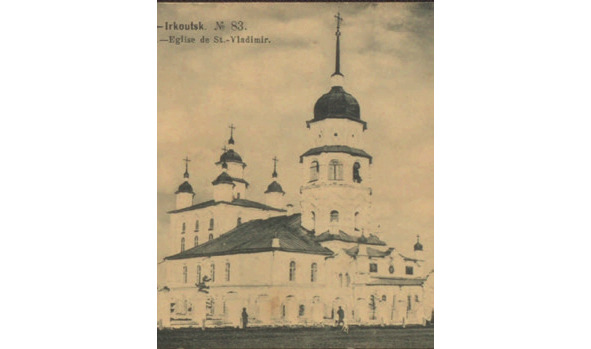
In its turn, Laninskaya Street was named in honour of the dynasty of Irkutsk merchants and especially F.A. Lanin, who created the first ironworks in Baikal region in 1738.
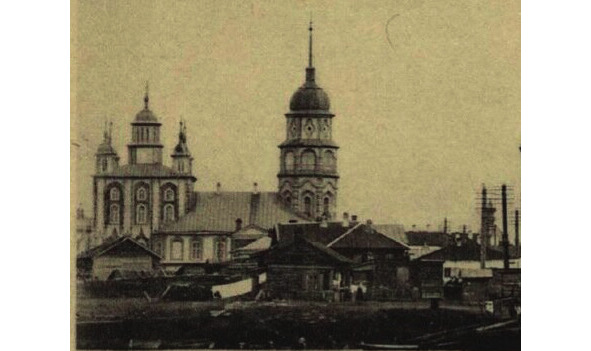
Opposite the Vladimir Church, you can see the beautiful building of the first Khaminov women’s gymnasium, built in 1860 and named after the famous Irkutsk merchant I.S. Khaminov, who donated about 1 million golden rubles (1.4 billion in modern rubles) for the needs of education in Irkutsk Governorate. The building was rebuilt several times, was seriously damaged in the great fire in 1879 and during the fighting in 1917, but in general it has been very well preserved to this day. Today there is a school number 72, which is continuing the traditions of education of the 19th century in the best possible way.
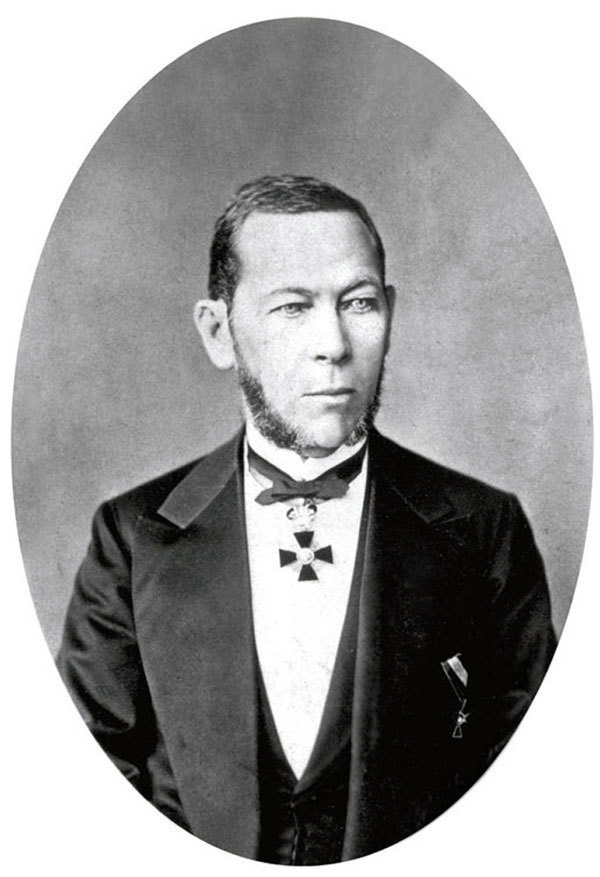
We continue our movement and turn right to Polskikh Povstantsev Street (former Seminarian), which got its name from the largest rebellion of Polish exiles in the history of Russia — the Baikal Insurrection in the summer of 1866. Moving along the buildings of the Irkutsk Pedagogical Institute and the bakery building, you can see one of the most beautiful wooden mansions in Irkutsk, which belonged to the Razsokhin family before the revolution in Russia. I.K. Razsokhin, who lived here in the first half of the 19th century, became the first Russian teacher of the Chinese language and the compiler of the Russian transcription of Chinese hieroglyphs.
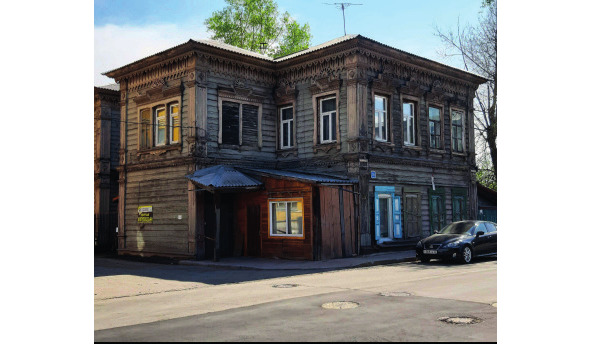
At the end of the street we are met again the Polish Church, and we turn left and move towards the main city square. On the right we see a small stele made of pink granite, which was installed in memory of the awarding of the Irkutsk Region with the Order of Lenin on June 8, 1967 for the successes achieved by workers in the field of economic and cultural construction, the creation of large industrial and energy complexes on the Angara River.
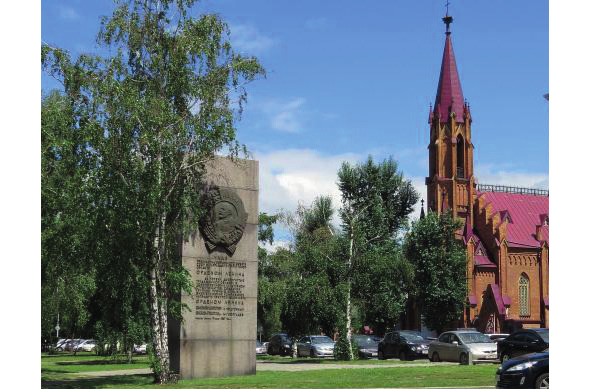
Just behind the stele you can see a small chapel built on the initiative of the administration on October 4, 2000 on the place of the altar of the Kazan Cathedral destroyed in 1932. It is a miniature copy of one of the domes of the temple. Inside groundwork of the building is laid with the stones from the foundations of the lost church.
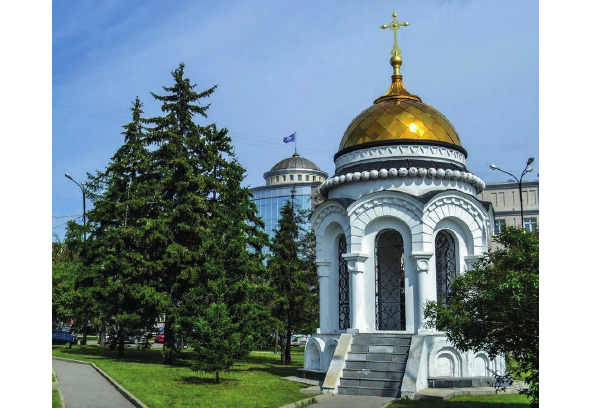
Right next to it, on the other side of the street, until Soviet times, there was another very picturesque chapel in the name of St. Innocent Bishop of Irkutsk, consecrated on January 16, 1877.
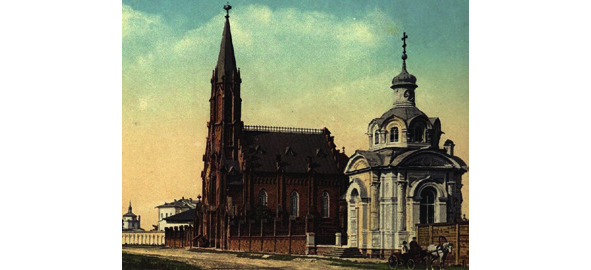
In its place today is the management building of OJSC “Irkutskenergo”, one of the four non-state independent energy companies in Russia. Unfortunately, none of the 9 stone chapels that existed in Irkutsk before the revolution has survived to this day.
Square of S.M. Kirov
We are at the entrance to the main square of Irkutsk. Since 1935, it has been named after the first secretary of the Leningrad Regional Committee and the manque head of the Soviet Union S.M. Kirov. However, over the long years of its existence, starting in the 1670s it changed at least 12 names. For the longest time it was known as Kremlin, Gostinodvorskaya and Tikhvin Square. Since 1752, the main trading platform of Eastern Siberia, the large Gostiny Dvor (Merchant Yard), was located here. In 1778, a stone building for more than 270 trade shops was built on this site according to the project of the Italian master of classicism Giacomo Quarenghi. Unfortunately it was destroyed a century later by the great fire in Irkutsk and has not remained to our days.
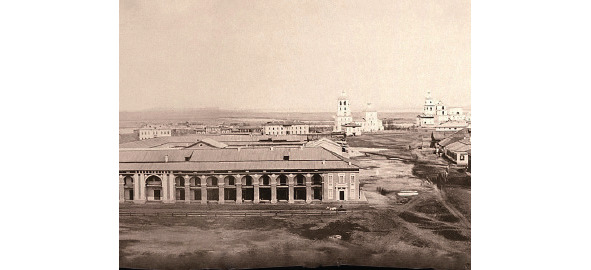
Let’s go around this square. The first on the right meets the familiar building of the government of the Irkutsk region. After it on a left rises the colonnade of the only Institute of Foreign Languages in Siberia (Institute of Philology, Foreign Languages and Media Communication of ISU), which was built by the talented Soviet architect I.G. Efimov in 1950. Irkutsk has the oldest traditions of teaching foreign languages in Siberia. Even the first school in the history of the city, opened by Archimandrite Anatoly Platkovsky in 1724, was “Russian-Mongolian” and educated translators from Mongolian together. Also the first in Siberia and the second in the world school of the Japanese language was opened in the city in 1754.
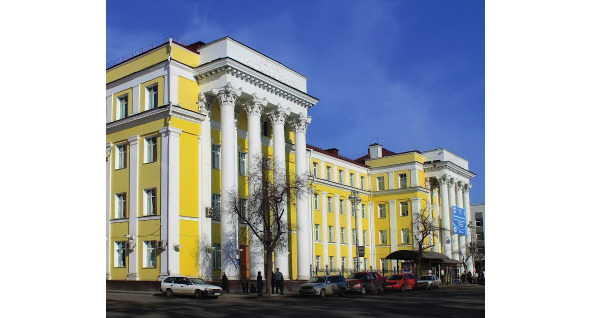
Moving further along the square, you can see a large parking lot, where until 2007 stood the building of the legendary long-term construction of Irkutsk — the annex of the “block A” of the city administration or the so-called “house on legs”, which was designed back in 1975 by V.A. Pavlov in the style of New Brutalism. The author himself has devoted more than 20 years to the capital of Eastern Siberia and is still one of the 50 best architects in the history of 20th century according to the World Triennial of the International Union of Architects.
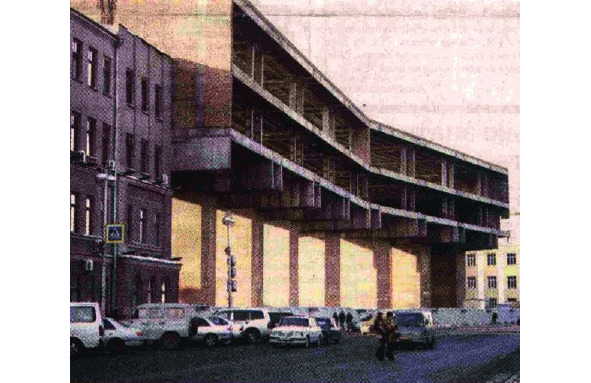
The central dominant of the square is clearly visible opposite — it’s a fountain, which was installed in the park on July 1, 1960, and literally “stolen” from its creator, who designed the decoration specially for his native city called Kursk. Todayit is the oldest of 34 fountains in the city. Next to the fountain on the western side of the square, you can see a model of the central part of pre-revolutionary Irkutsk.
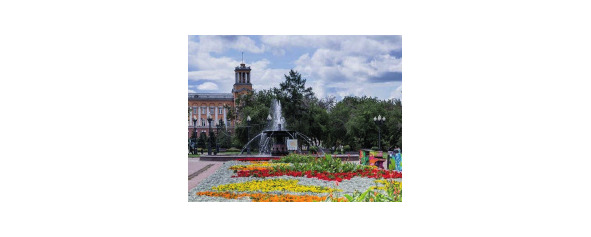
Further, on the right side, we see one of the oldest stone constructions in the city — the building of the City Duma. By the way, it has been placed here since 1874, and in Soviet times, the building was occupied by a City Committee of the CPSU. Unfortunately, only the windows of the first floor resemble about the graceful forms created by the architect V.A. Rassushin. It acquired its modern look in 1934 due to a constructivist superstructure with two floors designed by architect K. W. Mital.
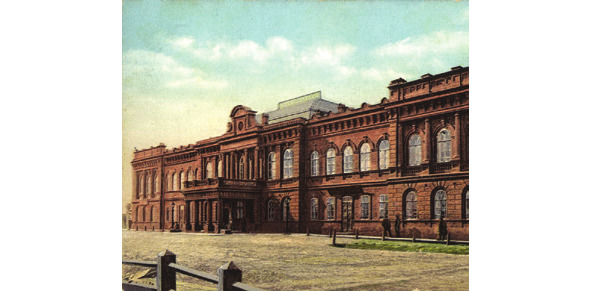
Next to the State Duma is the building of the Central Bank, built by V.N. Volkov in 1936. It is here that gold mined in the territory of the region is temporarily stored. In terms of ore gold reserves, the region is in first place in the Russian Federation (thanks to the unique Sukhoi Log deposit) and ranks fifth in gold production (up to 16 tons annually, 10% of the total production in Russia).
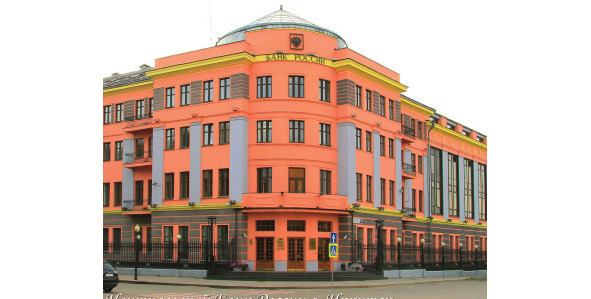
Across the road is another giant of the mining business — “Vostsibugol”. This is the fifth largest coal mining company in Russia, it owns the rights to develop deposits in Irkutsk Oblast, Krasnoyarsk Krai, Republics of Buryatia and Tyva. It produces up to 22 million tons of coal annually. The organization occupies one of the most beautiful buildings of the Soviet era in Irkutsk, built in 1950 according to the design of I.G. Efimov.
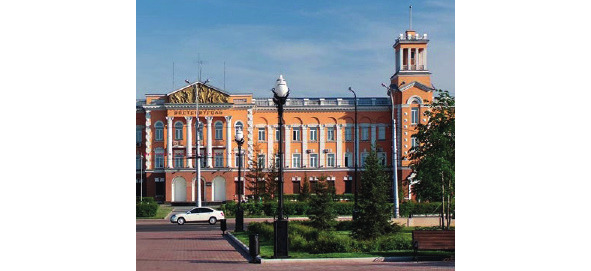
Once on the site of the park in front of the building there was a temple that for many years gave the name to the entire square — this is the Church of the Tikhvin Icon of the Mother of God, built in 1759. Sadly, it was razed to the ground in 1932, together with the cathedral, and at the wasteland nothing was built. It was one of the richest churches in the city, and was famous for its paintings, as well as the iconostasis with images of the 17th century. Today, a public transport stop and a park nearby the “Vostsibugol” building are named in honour of the lost church.
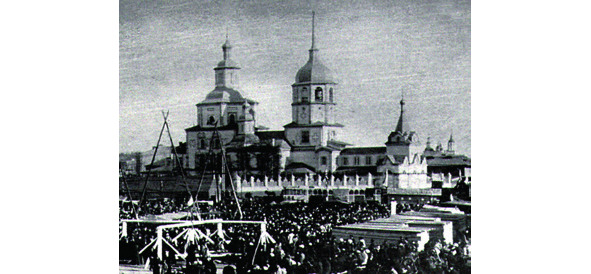
But let’s look at the opposite side of the square. First of all, we will see the faceless silhouette of one of the main Soviet hotels in Irkutsk called “the Angara”, established here in 1969. Earlier at this place was the predecessor of the Irkutsk Polytechnic University — Irkutsk Mining School, which opened here in 1893. Its building was dismantled during the construction of the hotel, as well as the building of the oldest city public library, which existed at the corner of modern Sukhe-Bator and Zhelyabov streets starting from 1864.
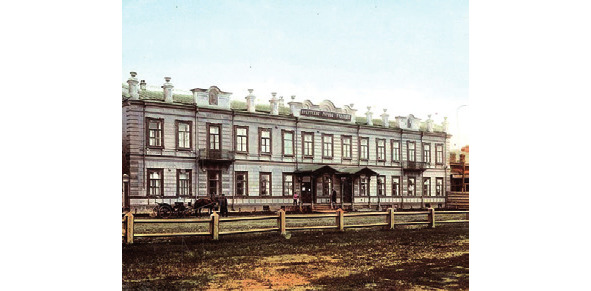
Another forerunner of all technical educational institutions in Irkutsk is hiding behind the body of the hotel — the building of the industrial school named after N.P. Trapeznikov, designed by the best architects of the city H.V. Rosen and V.A. Kudelsky in 1884. Today, its premises are occupied by the Faculty of Biology and Soil Science of Irkutsk State University.
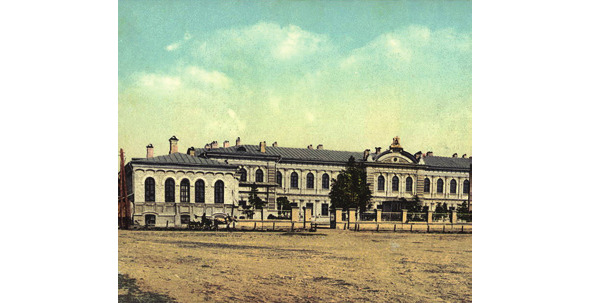
Opposite the building, there is a square named after M. M. Speransky, to whom a monument was established at this place in 2016 — the first in the history of modern Russia. For a year and a half from 1819 to 1821, this great lawmaker ruled Irkutsk Governorate. For 11 months of his direct work here, two governors and 48 officials were brought to justice, 2 million and 847 thousand silver rubles were returned to the treasury. But the main result of his stay in Irkutsk was a package of 10 bills for 4019 paragraphs regarding the arrangement of life in Siberia, which Alexander approved as a laws in 1822. Grateful Siberians did not forget their patron and Kirov Square was named after M. M. Speransky from 1886 to 1917.
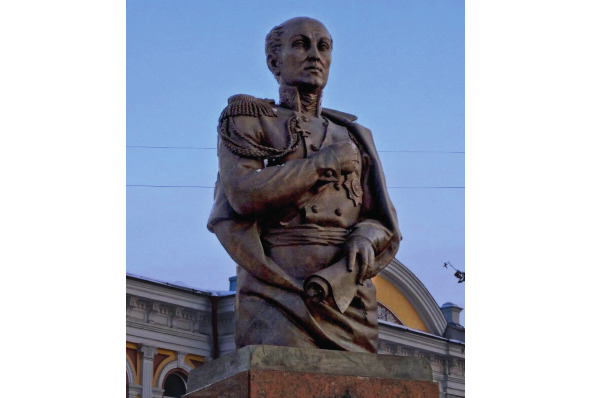
Kanazawa Street
We return to the State Bank building and turn right into a small lane, formerly called Bankovsky. The walls of a residential building built in 1938 for the employees of the Irkutsk branch of the StateBank of the USSR for 40 apartments are still rise here. On the other side of the alleyway there is another creation of the Soviet era — Hotel “Sibir”, built according to the design of K.W. Mital in 1933. Half of that building facing Lenin Street burned down in a severe fire on March 13, 1995.
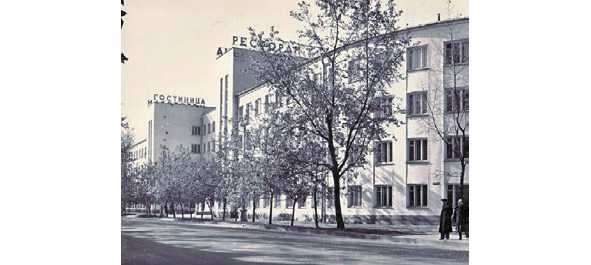
Today it is Kanazawa Street, named after the oldest sister city of Irkutsk (since 1967), the center of Ishikawa province in Japan. In memory of strong relations at the end of the lane a monument to Russian-Japanese ties which symbolizes a common undertakings was built in 1994.
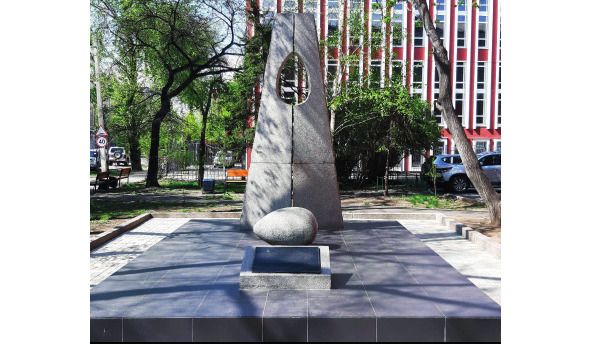
In total, Irkutsk has 15 twin towns, and the capital of Eastern Siberia was one of six places in the USSR, which were allowed to establish such relations with foreign cities.
The city has old ties with Japan. In the summer of 1783, the ship “Shinshu-Maru” of the Japanese captain Daikokuya Kodayu with 16 sailors, after six months of drifting ended up in the waters controlled by Russia. Wanting to return to their homeland the Japanese made a long journey from the Aleutian Islands to Irkutsk where they met Academician E.G. Laxman, who helped the five surviving sailors get an audience with Empress Catherine the Greatin in St. Petersburg. Only three returned to their native land in 1792, two remained as teachers of the first Japanese language school in Siberia. Thanks to the care for seafarers Russia received the right to enter one of the closed ports of Japan for the next few years. However, it was not possible to achieve a strong friendship then, but modern relations are already have a more than half a century of history.
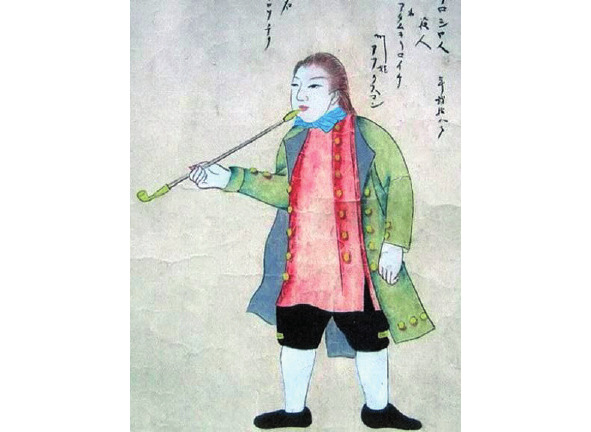
Marata Street
At the crossroads we run into a wooden house of Pyatidesyatnikov and turn left. This quarter is full of beautiful wooden apartment buildings from the late 19th century. Particularly notable is the pink mansion with its brick stone outbuilding, which belonged to a certain Bibikov and where lived for a long time one of the founders of Writers’ Union of Irkutsk, as well as a delegate to the first Congress of Soviet Writers I.G. Goldberg.
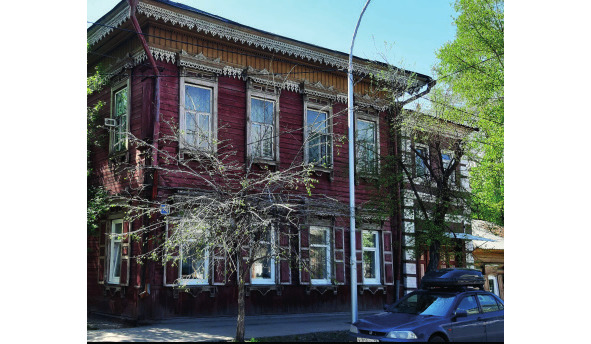
Irkutsk is undoubtedly considered the “wooden capital” of Russia. No other city has so many monuments of wooden architecture as here, and there is not such a variety of styles and forms of carving. And, besides, only a few cities in Russia has preserved entire blocks of wooden buildings — these are Kyakhta, Tomsk, Irkutsk and Vologda. Today more than 760 wooden houses are under protection, but it is not possible to restore them all due to the small budget of the city. Therefore, today the prerogative is on the side of foundations that buy houses and restore them, subsequently renting them out or putting them up for sale.
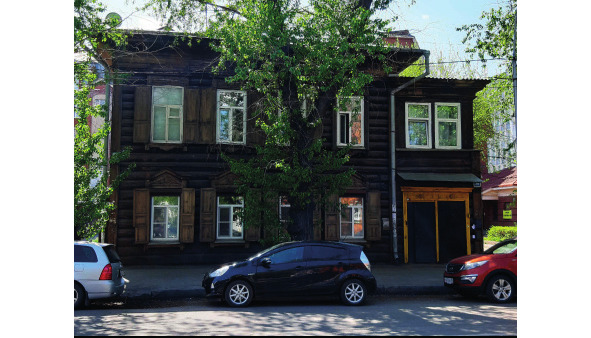
If we drive a little more along Marat Street, then on the right side we can see the first five-story building in the history of Irkutsk, which was built in 1934 according to the project of K.W. Mital, who himself lived in this house (Marat st., 29). The foundation of this building was made of bricks from the destroyed Kazan Cathedral. About this house the Irkutsk writer G.S. Stom (Apartsina) wrote the book “Our Home”. And this is no coincidence, because in different years here lived the famous doctors ophthalmologist Z.G. Frank-Kamenetsky, neuropathologist K.G. Hodos, otorhinolaryngologist I.M. Krukover, histologist S.I. Timofeev and surgeon V.G. Shchipachev, one of the founders of Russian balneology and creator of health resorts “Arshan”, “Darasun”, “Shivanda” and “Ugdan” — M.P. Mikhailov, founder of the Department of Geography of ISU and creator of the plan for the Angarsk HPP cascade — professor K.N. Mirotvortsev. In addition, here in the family of her parents, odontologist S.I. Weiss and dentist E.M. Emelyanova, lived one of the most famous Soviet pop singers — A.S. Vedischeva.
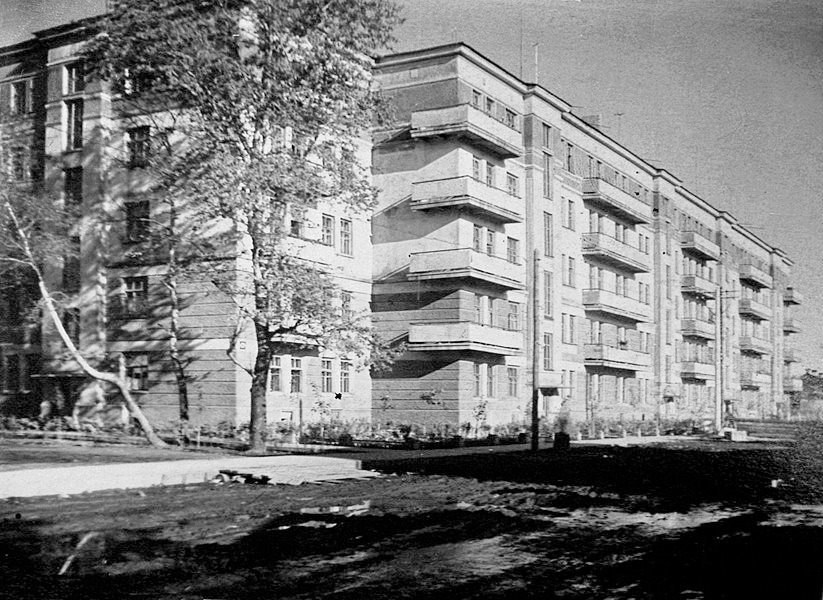
But at the next intersection, we turn left to Sverdlov Street and on the right there is another incredible mansion which built in the Romanesque style — it is the former Bazanov orphanage, which today houses the faculty clinics of the IMSU for eye and ENT diseases. The complex of buildings was created by the architect H.V. Rosen in 1883 to replace the building lost in the Great Fire, which had been located in the same place since 1874. The owner of the orphanage I.I. Bazanov did not live to see the resumption of the activity for only two months.
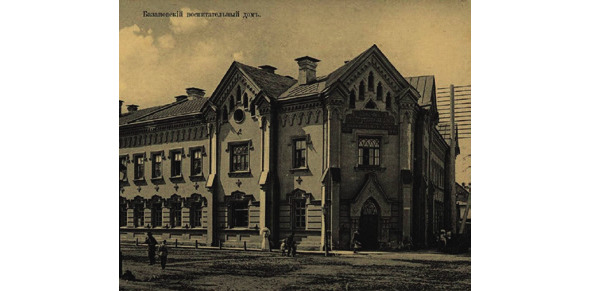
In Russia in 19th century, there were only eight such institutions, due to the very high mortality rate of adopted children they were not popular. Children were brought to the gates of the orphanage, where there was a special tray in which a desperate mothers left babies than they pulled the bell and ran away. No one ever tried to find out the secret of a women in childbirth. All the boys, upon completion of their education, received the surname of Bazanov and a profession, as soon as the girls received a dowry.
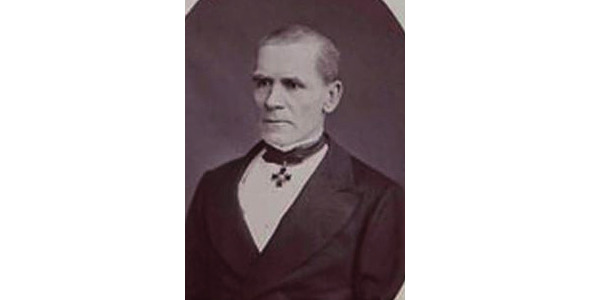
Opposite the orphanage behind a fence hides the stone mansion of Irkutsk merchant of the 2nd guild I.V. Samsonov, which was built in the middle of the 19th century and one of the few survived the Great Fire of 1879. After the construction of the hotel “Sibir” nearby, it remained in oblivion and today is in a sorrowful condition. From April to July 1915 there was an underground printing of the Bolshevik organization “Union of Printing Workers”. In Soviet times, communal apartments were appeared in the house.
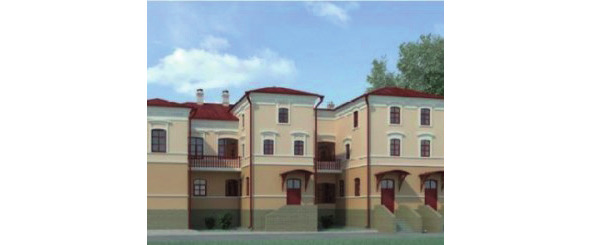
Lenin Street
On the other side of the intersection, on the left, you can see the building of the oldest bank in Irkutsk. These is a former State Bank, established in 1899, which today is occupied by the Faculties of Geology and Social Sciences of ISU, as well as the Research Institute of Biology. The building was badly burned out during the revolutionary battles in 1917, and was rebuilt several years later with tetrahedral and octahedral domes that accentuated the building’s volumes.
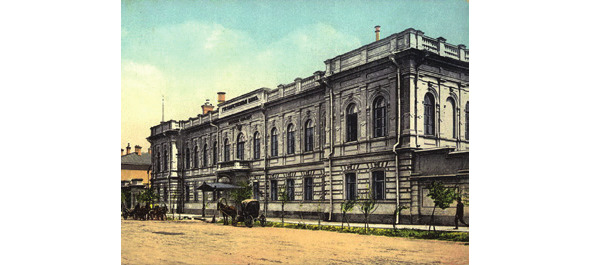
Across the road from it to the right is the building of the largest and oldest museum of arts in Siberia, which has more than 23 thousand works of painting, graphics, sculpture and decorative arts in its collection. The collection was based on the assemblage of the famous Irkutsk philanthropist and mayor V.P. Sukachev, who held the first exhibition back in 1874 and left his creation to Irkutsk shortly before the revolution. It is his name that the museum bears, which counts its creation from 25 April 1936.
The building itself was originally built for the needs of the Irkutsk gymnasium for boys in 1907 according to the project of D.R. Magidey. The main fund of the museum moved here in 1975, and despite the existence of three branches the exposition contains no more than 3% of all works of art.
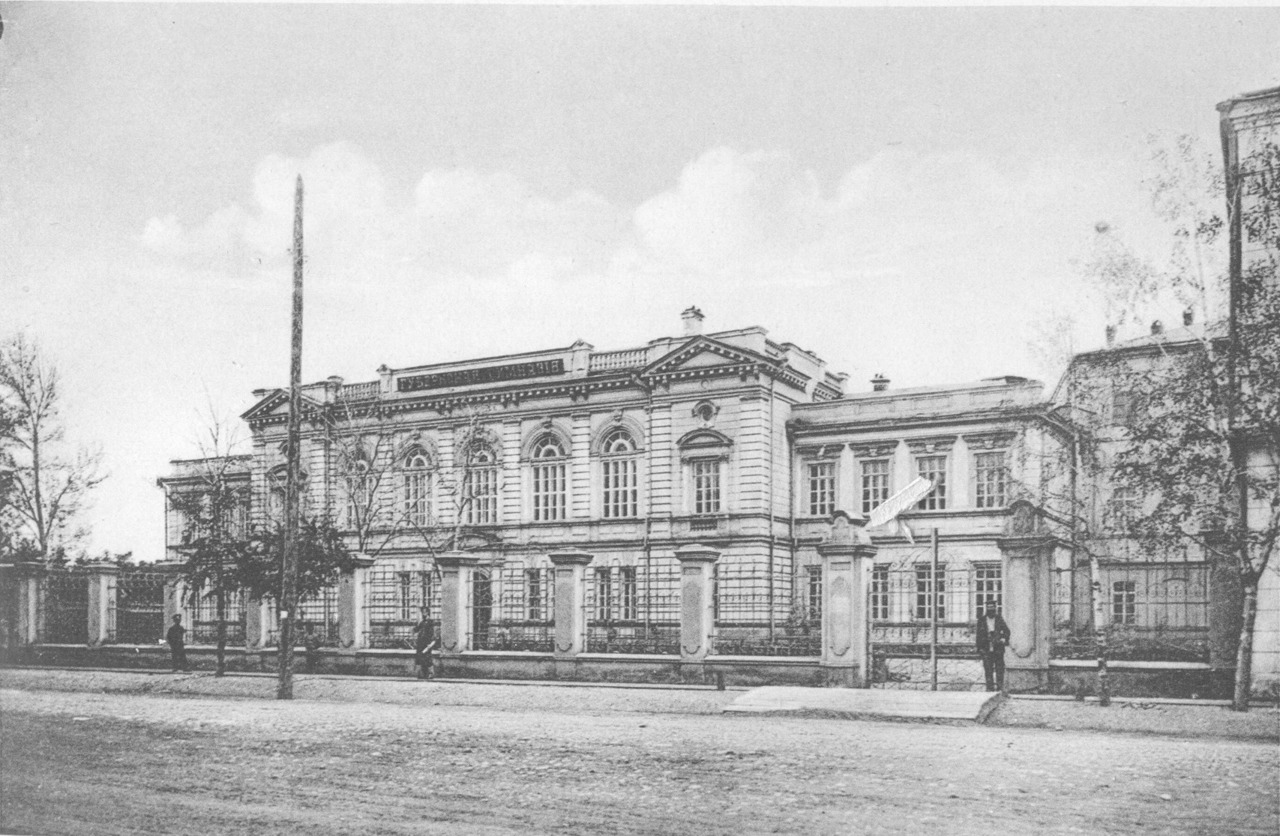
The nearby building of the Governorate Gymnasium for boys is also interesting. It’s opened here in 1805 and still is one of the oldest stone buildings in Irkutsk which was built back in 1799 for the needs of the main public school according to the project of A.I. Losev. Count M.M. Speransky, when he was the governor-general of Siberia, called this institution “authentically the best gymnasium in all of Russia.” And this is not surprising, since among the teachers there were such prominent historians as I.E. Muller, I.L. Slovtsov, I.V. Shcheglov and N.N. Kozmin.
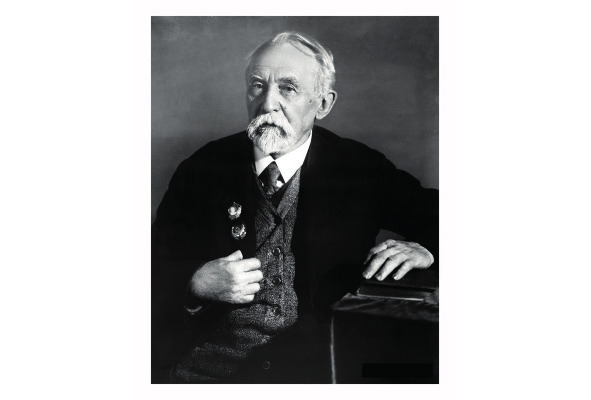
Many famous people were graduates of this gymnasium, as the founder of the first school of Tibetan medicine P.A. Badmaev, Deputy Minister of Public Education of Russia M.S. Volkonsky, organizer of the first revolutionary political organization “People’s Will” in Siberia I. G. Neustroev, medical scientists V.N. Popov, K.M. Pavlinov, S.A. Sukhanov and P.N. Shastin, travellers V.C. Dorogostaysky and A.P. Fedchenko, founder of the Soviet school in agronomic chemistry D.N. Pryanishnikov, first rector of ISU M.M. Rubinstein, three times cavalier of Order of the Red Banner L.I. Kotelnikov, writers I.T. Kalashnikov, N.S. Shchukin, V.M. Mikheev, I.V. Fedorov-Omulevsky and F.M. Lytkin.
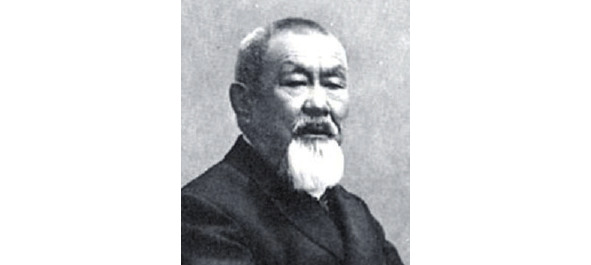
Tellingly, this building still houses an educational institution — the Irkutsk Aviation Technical School, which moved here in June 1945 to replace the cartridge plant No. 540 evacuated from Leningrad during the WWII (it was one of the four most powerful such factories in the country, produced more than 700 million ammunition).
On the site of the building opposite, where the Irkutsk Regional Geriatric Center is now located, there used to be the oldest kindergarten in the city, opened at the initiative of M.G. Tyumentseva in 1869. Its building, designed by the best architect of Irkutsk, Baron H.V. Rosen in 1882 instead of the burnt down old one, it was one of the best wooden buildings in the capital of Eastern Siberia. However, in 1938, during the construction of the clinic, it was moved and installed on the site of the parish cemetery of the St. Charalambos Church. Today, on the site of the kindergarten, there is a public garden named after one of the first doctors of sciences in the USSR, as well as the Irkutsk author of the textbook on nervous diseases K.G. Hodos.
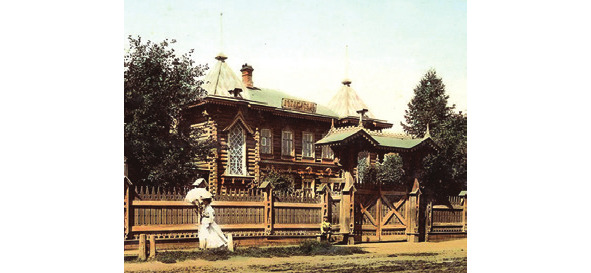
At the crossroads there are towering buildings representing the reference buildings of the Soviet era, which surprisingly organically fit into the old city face. At the corner of Lenin and Gorky streets there is the famous Irkutsk “house with a trunk” built in 1950 according to the project of E.F. Yanko. Here lived the main artist of Irkutsk in 1970s and the author of the memorial “Eternal Flame” V.G. Smagin. Opposite on the left the house in which she spent the last years of her life People’s Artist of the RSFSR G.A. Kramova. On the other side of the crossroads there is another magnificent monument of Soviet architecture — a house buit in 1948 according to the project of A.S. Butenko, where lived until his death the famous poet-ethnographer A.S. Olkhon (Pestyukhin).
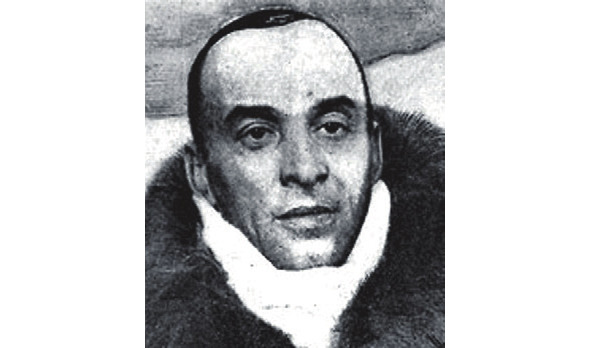
Gorky Street
The next thing that attracts our attention is the monument to the five-time nominee for the Nobel Prize in Literature M. Gorky, established in 1984 on the left in a small square. Nearby is the “Radiohouse” — one of the most bizarre buildings of the Soviet era in Irkutsk, consisting of parts made at different times in more than half a century, but united into a single complex thanks to the talented architect N.N. Belyakov in 1982.
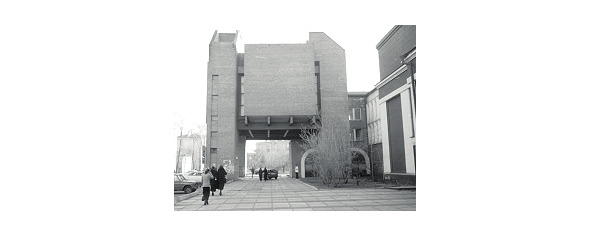
On the other side of the road are the buildings of the Baikal State University, which opened in Irkutsk in 1930. They are adjoined by a small park, organized here in 2011 and named after Shigeki Mori — the permanent mayor of the Japanese town of Neagari, Ishikawa province, which has twinning relations with the city Shelekhov — an industrial neighbour of Irkutsk. Also he was this mayor who initiated the twinning relationship between Irkutsk and the Japanese city of Kanazawa in 1967.
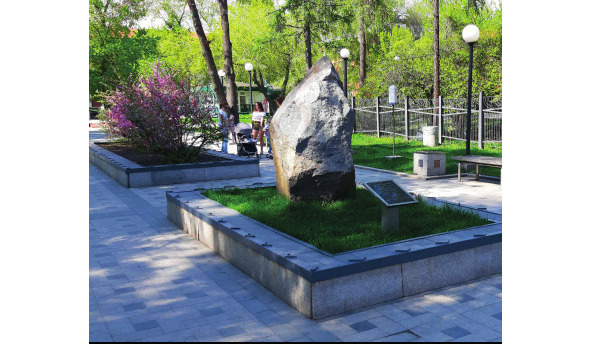
After the park, the first wooden house on the right side of the street belonged to a member of the Irkutsk judicial chamber M.S. Stravinsky and served as the building of the vice-consulate of Belgium in Irkutsk from 1914 to 1920. Moreover, the owner of the mansion himself became the first ambassador.
On the same side of the street, at the crossroads, you can see the estate of the mayor V.V. Zharnikov, who went down in history as the creator of the first water supply system in Irkutsk in 1905. An old sculpture “Boy with a Swan” is hiding in the garden which surrounding the house.
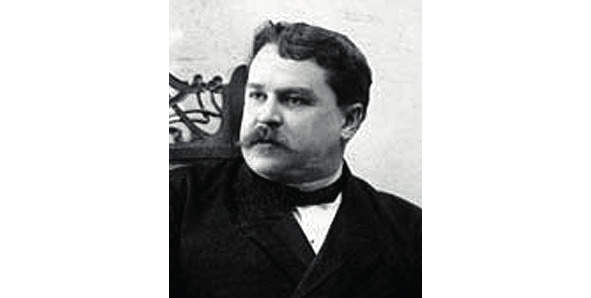
On the opposite side of the street there is a small square with a monument to the first modern governor of Irkutsk Y.A. Nozhikov, which was installed in honour of the 75th anniversary of the Irkutsk region in 2012 to replace the sculpture of a dragon that appeared at this place since 2007. It is interesting that earlier this was the place where the bust of M. Gorky was located, until it was destroyed by vandals in 1963.
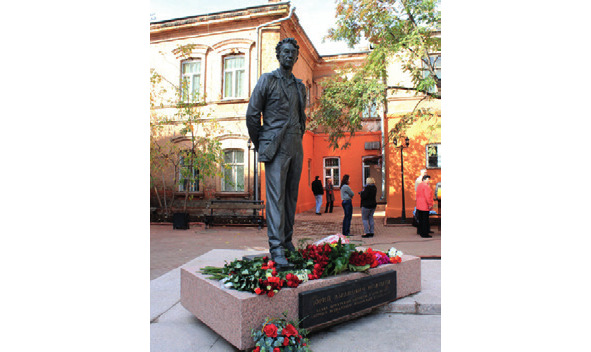
Continuing along this street, on the left we notice two more buildings in the brutalist style, belonging to the talent of V.A. Pavlov. Opposite to them the building of the gynaecological clinic. Further, on the other side of the road, the walls of the famous “House of the Pilots”, created on this place in 1936, where lived the pilot and Hero of Socialist Labour I.N. Sharov (flew over 17 thousand hours). The headquarters of the Central Air Communications Agency is still located here. At the entrance, a few years ago, it was possible to see columns made from gravestones from the Old Jerusalem cemetery.
Closes the Gorky Street “House of Science and Technology” built in 1955 according to the project of N. А. Sergeev on the site of the former passage of A.F. Vtorov, which since 1897 occupied the corner of the block along this street and was considered one of the largest stores in Irkutsk. This richest merchant was the founder of the first “supermarkets” in Russia. His passages were located in all major cities of Russia from Petersburg to Sretensk. Here lived for many years the youngest of two sons of this merchant — Alexander. Unfortunately, the passage completely burned out in December 1917 during the battles on the streets of Irkutsk.
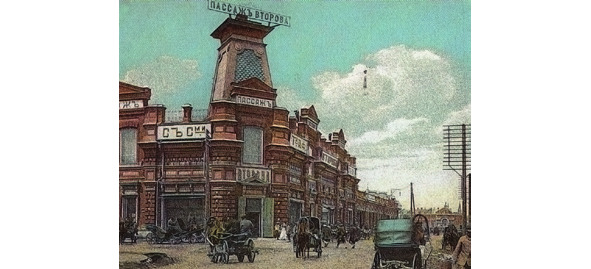
Labour Square
We turn left and run into Labour Square, the main dominant of which is the circus building, built in 1964. Irkutsk became the first city in Siberia and on Far East where such a building appeared. Irkutsk residents are longtime fans of such performances. The first circus troupe of a certain Mikoletto visited the city back in 1795, and a permanent wooden building appeared on Tikhvin Square thanks to the Italian entrepreneur Soulier in 1868.
Earlier, starting from the 1780s, this place was occupied by Ivanovskaya Square with trading rows of Melochny (“Trivial”) Bazaar, where people traded mainly in agricultural goods brought from the villages. Behind the circus building, you can still see the shops of the Old City Public Administration, which have been occupied by a mica factory since 1929 (now Sverdlova Str., 41).
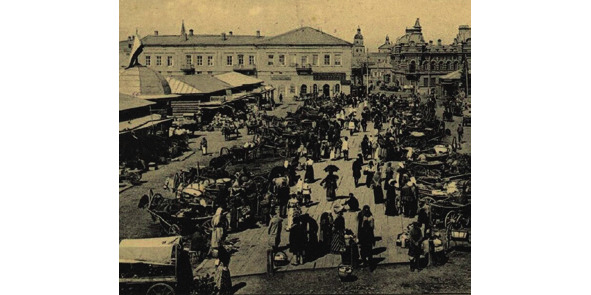
Here from the house of the merchant V.A. Ostapin on June 22, 1879, the Great Fire began, which destroyed the best part of Irkutsk. The flames blazed for three days and swallowed up the entire city center. Burnt out 75 blocks with 105 stone and 3418 wooden buildings. The fire took away practically all public, educational and state institutions, many temples, museum; also destroyed the entire city archive with unique documents.
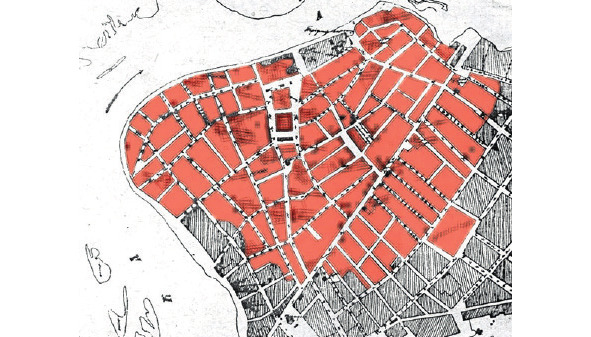
However, one of the oldest buildings in Irkutsk is still preserved on the other side of the square — the building of the hotel “Moscow Courtyard” created in 1821 at the expense of the merchant N.P. Trapeznikov, and donated to the city for free use of the City Court in 1887 by his grand-nephew, which already known to us as V.P. Sukachev. The justice authorities are here to this day.
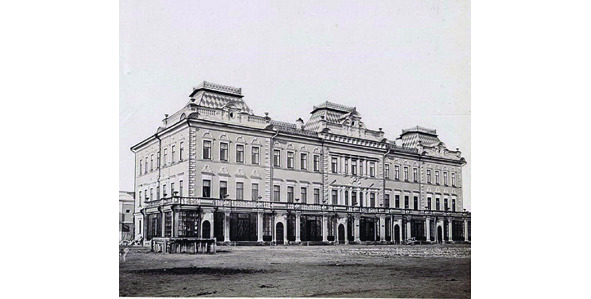
At the end of the ensemble of the square, the building of the central telegraph, built in 1932 by the architect N.N. Baikov. It is located on the site of the former house of I. A. Nemchinov, where in November 1903 the main telegraph office of Irkutsk was transferred. Today the representative office of OJSC “Rostelecom” is located here.
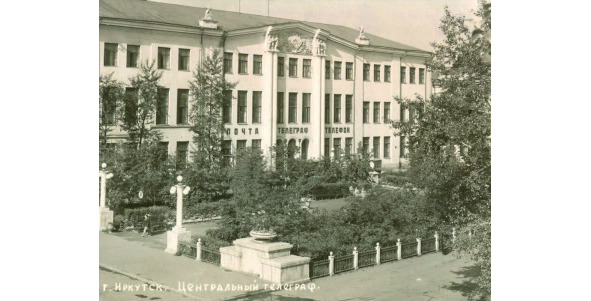
There is an illuminated fountain in the center of the square. Earlier in its place was located one of the most picturesque stone chapels of Irkutsk — in the name of the Iveron Icon of the Mother of God. It was installed here in 1892 by the architect V.A. Kudelsky at the expense of the Irkutsk industrialist and philanthropist A.M. Sibiryakov.
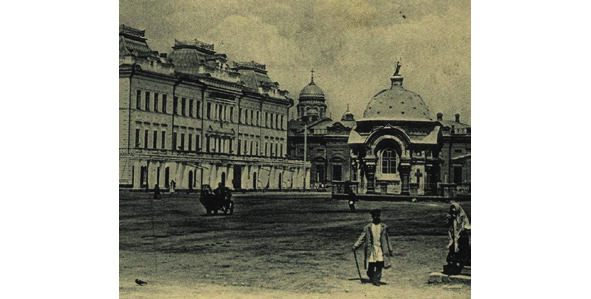
Noteworthy is the nearby best monument in Russia to the famous film director L.I. Gaidai, established here in 2012. For a talented cinematographer, Irkutsk has become a fateful city. Here he graduated from school No. 42 (now Lyceum No. 36 of JSC “Russian Railways”), volunteered for the front, returned injured, received his first theatrical experience and decided to become an actor. In addition, L.I. Gaidai wrote his first script, which brought him worldwide fame for the film “Dog Barbos and Unusual Cross”, when had found a play of S.I. Oleinik in the attic of his parents’ house in Irkutsk in 1961. It is the scene from this film that is shown in the composition of the monument designed by S.B. Demkov.
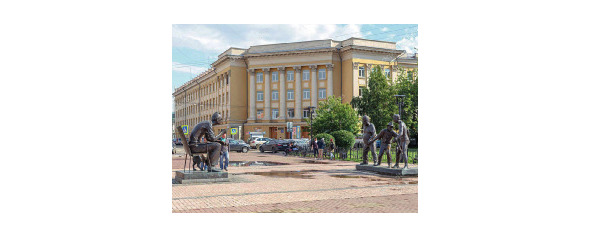
Sverdlov Street
Well, and we continue to move along Sverdlov Street, in the past it bore the name of an outstanding merchant, philanthropist and mayor V.N. Basnin. Today only the library wing, where the “Museum of Communications” is located, and also a small house facing the main street, remained from his family estate. The latter is one of the oldest stone residential buildings in the city and was built in 1801, but lost its second floor after the Great Fire.
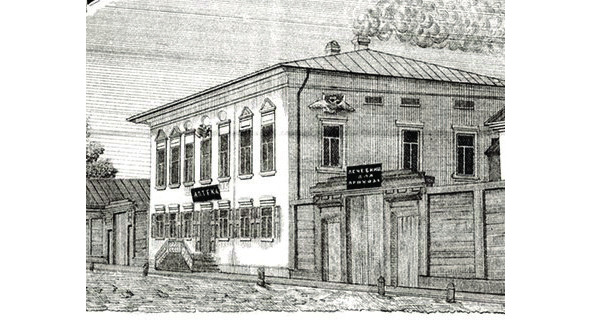
Since 1834, almost a third of this quarter was occupied by the Basnin’s Garden with greenhouses, the collection of which was formed by the best expert of Asian plants among his contemporaries N.S. Turchaninov. However, the fire element did not spare it either. Today in its place is the school No. 11, built in 1915 according to the project of K.W. Mital. The graduates of this institution were the Hero of the Soviet Union A.S. Bogdanov, cosmonaut A.A. Ivanishin, pianist D.L. Matsuev and many other famous scientists and public figures.
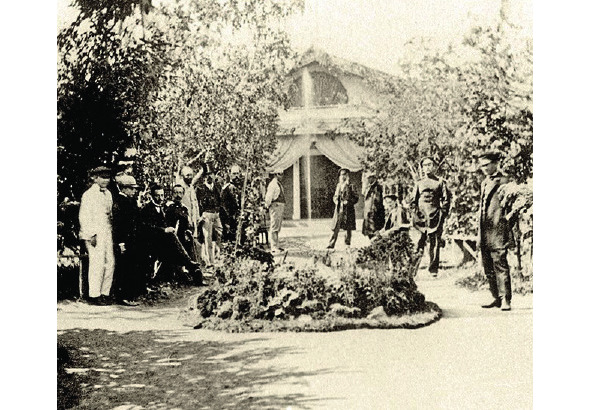
Right behind the school is the building of the former hotel “Commercial Courtyard”, which opened here in 1902. After the revolution and up to the 1970s, it housed a dormitory for Irkutsk theatre workers, and during the WWII the actors of Moscow Satire Theater and Kiev Opera Theater lived here. Today it occupied by various departments and committees of the Irkutsk administration.
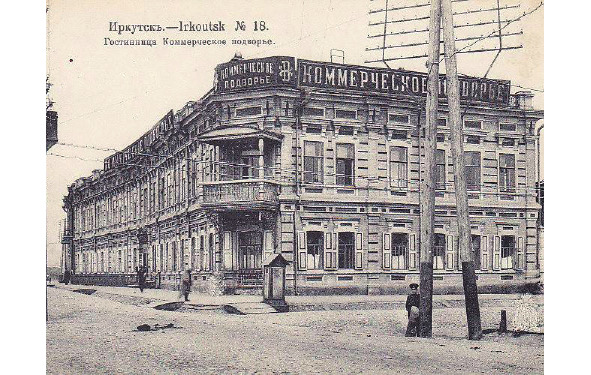
Opposite there is a one-storey house where lived the famous explorer of the Eastern Sayan Mountains and the merchant S.P. Peretolchin. Immediately behind it is the small building of the poorhouse of the Tikhvin Church, adjoining against the walls of the “Vostsibugol” building — the only construction that has survived from that magnificent temple.
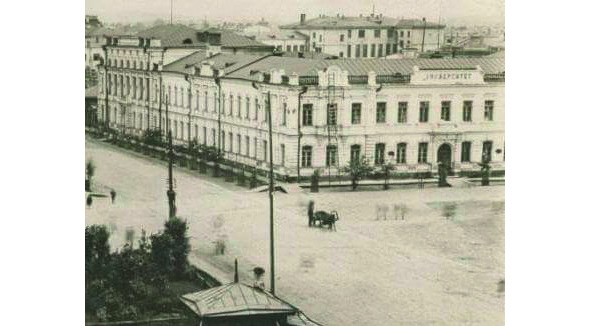
On the opposite side of the road, the department of humanitarian and aesthetic education of the Pedagogical Institute of Irkutsk State University, which is located in the building of the former 2nd Khaminov’s gymnasium for girls, which opened here in 1912. Here at the school of red commanders for four months in 1920 studied the future founder of Mongolia D. Sukhe-Bator, after whom named this street. In 1935, according to the project of K.W. Mital, a “party activist house” was added to the gymnasium building, which today also occupied by ISU.
Zhelyabov Quarter
We turn right to the main merchant street of Irkutsk, named today in honour of A.I. Zhelyabov who was one of the organizers of the assassination of Emperor Alexander II. In the past, it bore the name of famous merchant of the 1st guild, twice elected mayor and patron of the arts K.N. Trapeznikov. There are many beautiful merchant mansions along the street.
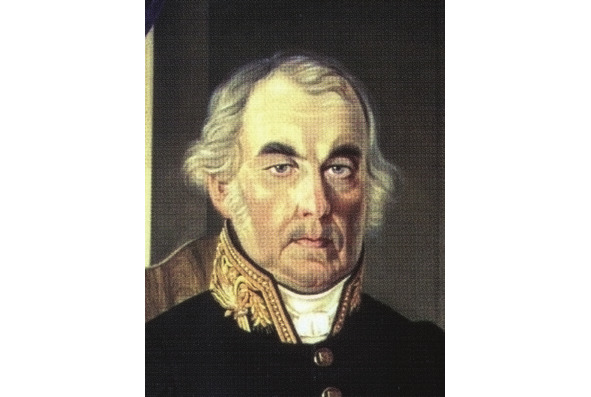
First on the left is the magnificent house of A.F. Vtorov with openwork monograms “AB”, meaning the initials of the owner, built in the neo-russian style according to the project of the famous theatre architect V.A. Schroeter in 1897. The owners moved out of the mansion back in 1913, and already on October 29, 1917, the first All-Siberian Congress of Soviets took place there, and a committee of Central Siberia was elected. Since 1937, the building has housed the “Palace of Children and Youth Creativity”, which has brought up a whole galaxy of talents from the poet M.D. Sergeev to pianist D.L. Matsuev.
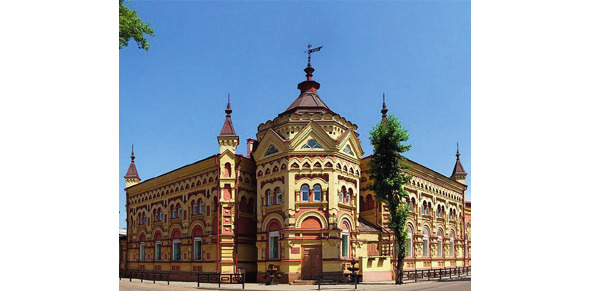
The magnificent mansion is adjoined by a shopping building, which was built for the merchant N.S. Chupalov back in 1801, according to A.I. Losev, but it was bought by the family of Vtorov. After it is a house of the Soviet era, built in 1951, overlooks Labour Square. It adjoins the mansion of the 1st guild merchant I.S. Dubnikov, whose estate occupied almost the entire block in the past.
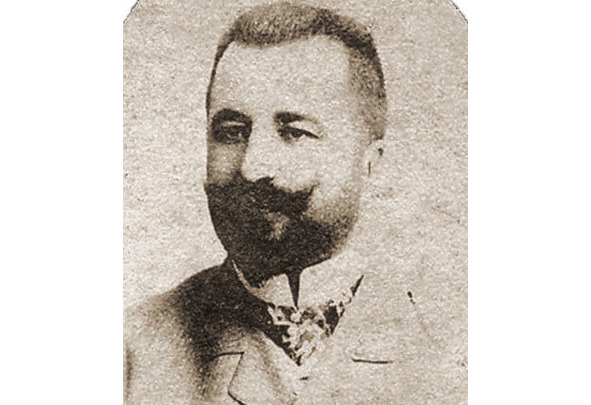
We dive to the left into a short lane and freeze in front of the walls of a magnificent castle with towers and “Stars of David” in the frieze. It is easy to guess that this is the house of the head of the Jewish community of Irkutsk I.M. Feinberg. The mansion was built according to the project of the city architect A.I. Kuznetsov in 1902. Since then, the house has been occupied by many organizations from the construction management of the Circum-Baikal Railway to the art museum and college, which is now located there. During the civil war in Russia, the units of the Red Army were formed here and also worked famous commanders S.G. Lazo and A.A. Taube.
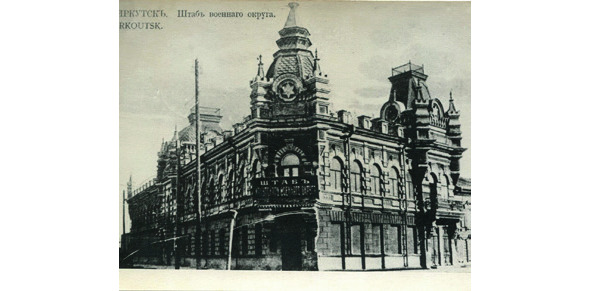
On the right, through the branches of the trees, you can see the sculpture “Muse”, which was installed on the 300th anniversary of the assignment of the status of the city to Irkutsk in 1986 opposite the building of the Irkutsk Regional Children’s School of Arts. By the way, here studied until 1990 the People’s Artist of the Russian Federation, virtuoso pianist D.L. Matsuev. Thanks to this man, since 2004, every September in Irkutsk, the festival of classical music “Stars on Baikal” has been held. The repertoire of the musical theatre in the capital of Eastern Siberia at this time resembles the posters of the best concert halls in the world.
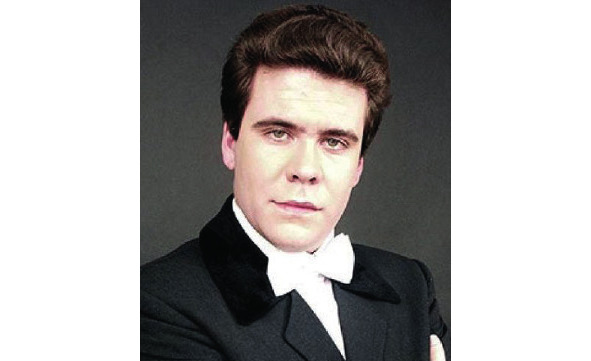
Directly behind the school of arts placed a small wooden house of mechanics Karasev, where in 1909 illegally lived the frustrated head of the Soviet Union S.M. Kirov. He spent six months in Irkutsk and during this time changed 12 addresses. His underground work led to numerous strikes by railroad workers in 1910.
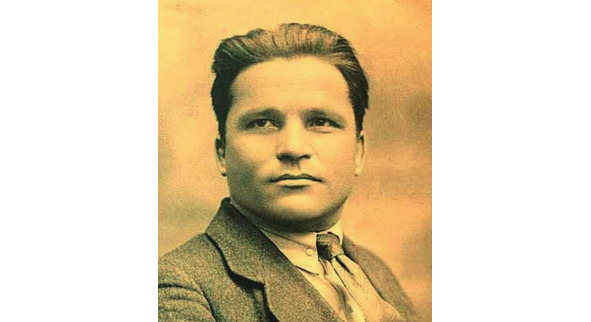
Opposite is the exhibition center named after the Irkutsk artist V.S. Rogal, which opened here in 1999 and is often used for various thematic exhibitions, so this is one of the most dynamically developing art museums in Irkutsk. In the past at this place was a small wooden house, where in 1901 was born one of the greatest documentary filmmakers of the XX century — M.I. Romm.
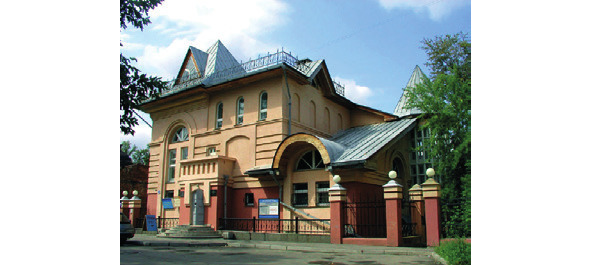
At the next crossroads, we turn right onto the street named after the founder of the squadron of anarchists and partisan movement in Eastern Siberia during the civil war, N.A. Kalandarishvili. At the corner of the street (Khalturina, 8/1) you can still see the house where he lived. He was visited several times by such people as one of the founders of Mongolia and the head of the guerrilla movement in Western Siberia B.Z. Shumyatsky, as well as the commander of the troops of the Far Eastern Republic I.P. Uborevich. In many ways, the Mongolian state was created in this house.
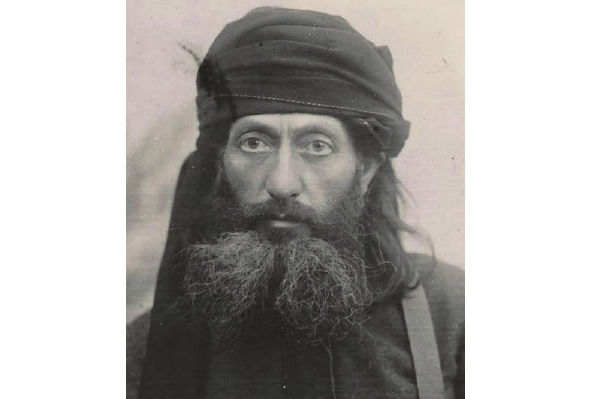
The famous “Zhelyabov” wooden quarter begins from this lane. In this part of Irkutsk, an entire area of historical buildings has been preserved almost in its original form. On the left is the one-story wing of the estate of the impoverished merchant Vyazmin on Kalandarishvili Street meet us first. All of its buildings are designed in a classic style.
We turn left and find ourselves at the end of the 19th century. On the right, across the street is Orlova’s pink mansion, upholstered in rustic wood. Continue moving along Zhilyabov Street, on the left we notice the magnificent greenish carved house of Lavrentiev, which was rented out for the needs of the gymnasium for boys of the Russian Gentry Assembly since 1906.
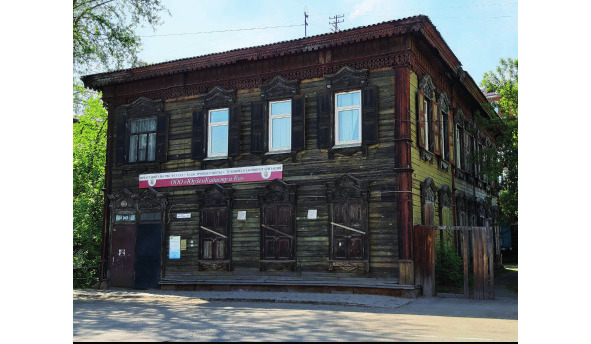
Behind it is Ivanov’s mansion painted in red lead with an apartment building. At the end of XIX century here lived son of the main fur trader in Siberia and the first director of Irkutsk Drama Theatre I.B. Patushinsky.
He was followed by the beige estate of the explorer of the Aleutian Islands and one of the leaders of Russian America A.P. Ocheredin (st. Zhelyabova, 25a). Here we turn right into the narrow Pugachev lane.
We are greeted by the recently renovated house of the merchant V. Posokhov, where the hotel of the same name is located today. Behind it is the modest but oldest grey estate of Kolchenov with an outbuilding and a barn built in the 1860s.
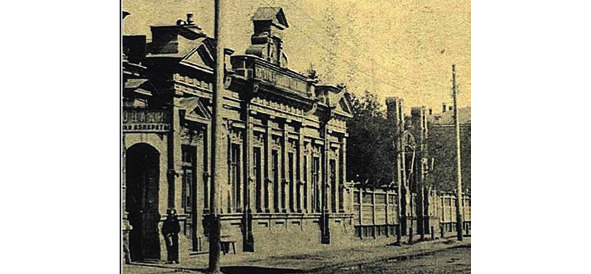
The lane ends up with a long brick building of the warehouse of the Mutual Insurance Society built in the 1880s. At the crossroads let’s turn left and go to the next intersection, opposite which is the Intermunicipal Directorate of the Ministry of Internal Affairs of Russia “Irkutskoye”, which is easy to identify by the retro police car standing in the exhibit to the right of the entrance.
Let’s turn left here again, going around the two wooden houses of the Dobrokhotova estate. After them you can see an inconspicuous beige house, where in 1902 was born the famous constructor of military helicopters N.I. Kamov. By the way, shortly after his birth, this house was visited by polar explorer A.V. Kolchak.
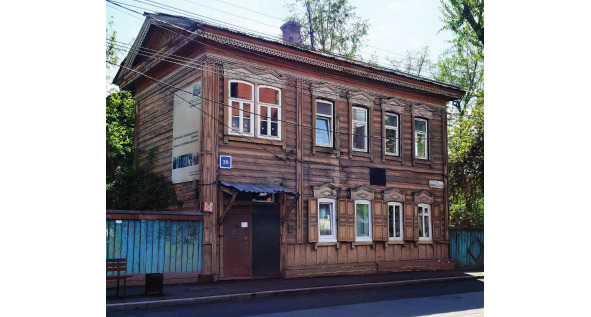
The opposite side of the street is occupied by a residential building built in 1987 in the brutalist style according to the project of V.A. Pavlova. At the intersection with Zhelyabov Street on the left, is Michurin’s blue estate with store.
Further, on the Dekabr’skikh Sobytiy Street attention is drawn to Shipunov estate with a stone first floor located on the right. After it is the former Yakovlev‘s apartment building with an arms shop.
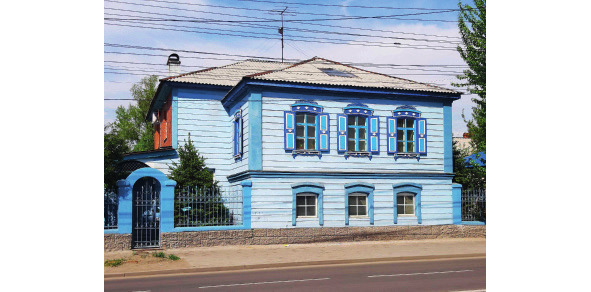
But more attention attracts the huge stone mansion in poor condition on the other side of the intersection. This is the estate of famous Irkutsk merchants and benefactors known as Medvednikovs, after whom the modern Khalturin Street was once named. They were the founders of the first bank in the history of Irkutsk, as well as the first gymnasium for girls in Siberia. The building itself was created back in 1795 according to the project of A.I. Losev and now requires immediate restoration.
Here we turn right on Khalturin Street in order to admire the mansion of the city architect A.P. Artyushkov in a classic style (Khalturina st., 21), which was recently restored. The street, named after the author of the terrorist attack in the Winter Palace in 1880 S.N. Khalutrin, ends at the fence of the shopping center “Fortuna”.
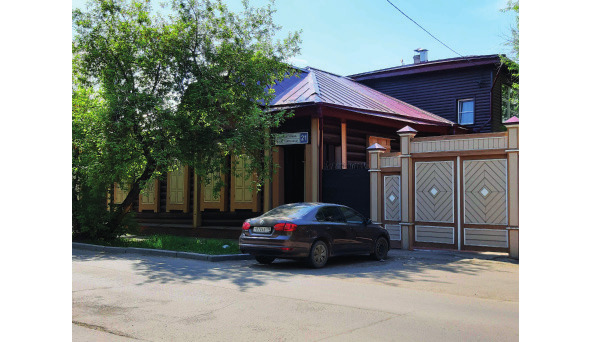
In the past, all trading floors here were occupied by the firstborn of mechanical engineering in the Irkutsk region — the heavy machinery plant named after V.V. Kuybyshev. It arose in this part of the city in 1930 on the basis of E. Khanov’s transport workshops, where military transport was repaired and produced for the needs of Siberia and the Far East. After the revolution, the main profile of the enterprise was the production of gold mining equipment. In 1968, the world’s largest river scoop dredge (length 236 m, width 50 m, height 54 m, weight 10,300 tons) was created here. Totally 184 dredges were produced, which are currently used in 17 countries of the world.
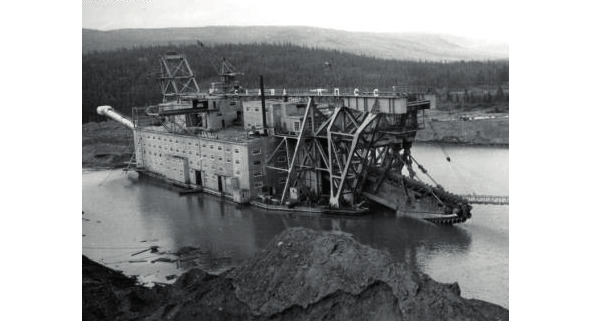
In addition, the plant created equipment that is now installed on almost all blast furnaces of the former Soviet Union. Not to mention that the largest plants of ferrous and non-ferrous metallurgy in Russia are equipped with semi-continuous casting machines manufactured by IHMP. Although only two workshops remain of the former greatness, today the enterprise is being revived. In 2012 it received an order to manufacture metal structures for the cosmodrome “Vostochny”.
Immediately behind the former buildings of IHMP Ushakovka River begins — another waterway of Irkutsk. Initially it was called Ida, but in 1681 the merchants brothers Ushakovs built a mill on it and they began to be called by their last name. In the past, it caused a lot of trouble for the city by floods, and its mouth stretched for 400 m. However, today the river is unrecognizable — it has become very shallow, the water is not drinkable, and the hydrogen sulphide springs, which made its waters curative in the past, were filled up during the development of the quarry inside the city.
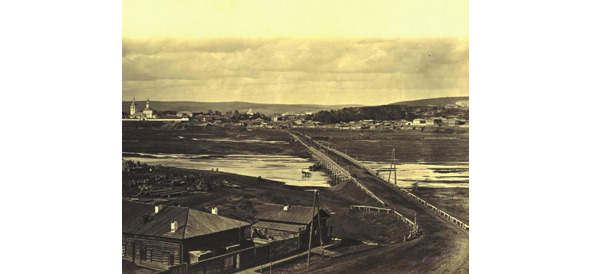
We are crossing Ushakovka River along the Znamensky bridge, which appeared near the mouth by 1868 and find ourselves in the suburb of Marat. Once upon a time at this place was the building of the Admiralty, which located in Irkutsk from 1754 to 1839. and managed the Pacific Fleet, as well as subsequently the affairs of Russian America. At that time, the capital of Eastern Siberia already had its own navigation school and shipyards; factories for the production of ropes, shipbuilding materials, anchors; there was a spinning mill, a resin factory, hemp shops and much more.
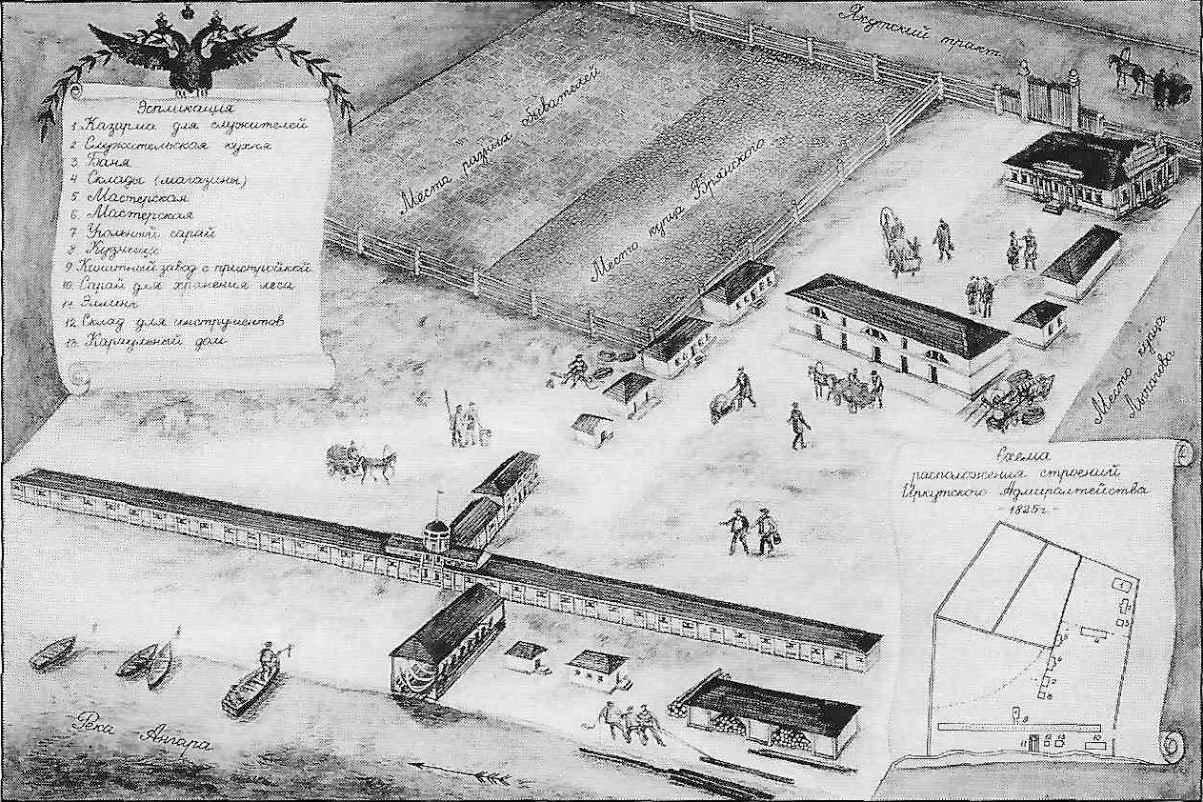
Monastery of Icon of Our Lady of the Sign
We go around the transport ring around the “Admiralty Grove” and arrive at the complex of the oldest nunnery in the Angara region, founded here in the name of Icon of Our Lady of the Sign in 1689. Despite its remoteness, the monastery has always attracted a lot of attention. In 1708 a first Russian Emperor Peter the Great personally sent the Gospel to here, which is still preserved in the monastery in a heavy silver frame. In 1741 the daughter of the favourite of the Peter’s court A.P. Volynsky — Anna, was forced to spent here about six months. As gratitude for the care shown to her here she presented the altar gospel.
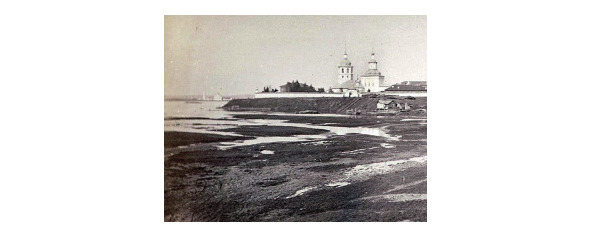
The first to meet us is the only monument in Russia to the admiral and Supreme Leader of Russian Empire A.V. Kolchak, which was installed here on the 130th anniversary of his birth on November 4, 2004 according to the project of V.M. Klykov and at the expense of the famous Irkutsk criminal authority S.V. Andreev.
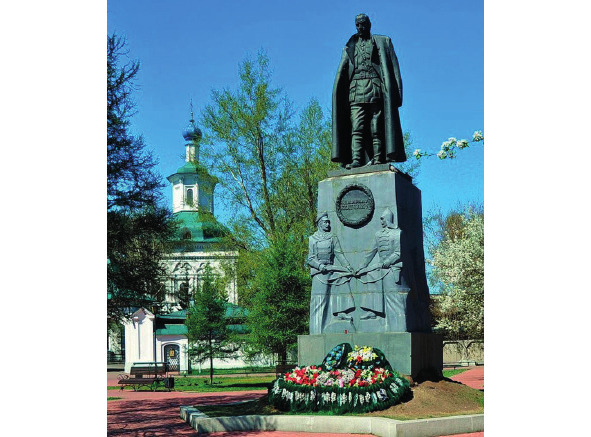
Irkutsk was a fateful city for A.V. Kolchak. He was here six times (1902, 1903, 1904, 1911, 1918, 1920). Firstly, he was married in Irkutsk on March 5, 1904 in St. Charalambos church on his only wife S.F. Omirova, who came to Verkhoyansk for him from St. Petersburg. From here, right after the wedding, he went to war with Japan, crossing Lake Baikal on foot along the ice railway. Finally on February 7, 1920 A.V. Kolchak was shot in the Irkutsk prison castle, and his body was thrown into an ice-hole of the Angara River, where the nuns of the Monastery of Icon of Our Lady of the Sign took water. Therefore, the location of the monument is not accidental: opposite the mouth of the Ushakovka River at the intersection with the former Yakutsk Tract (nowdays Rabochego Shtaba street), along which A.V. Kolchak first entered Irkutsk in 1902, returning from an expedition to search for Sannikov Land (a phantom island in the Arctic Ocean).
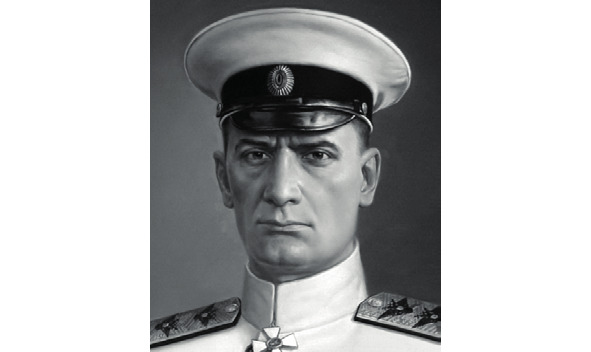
Every year, the court hearings do not subside with the demand to dismantle the monument to the “tyrant and executioner”. However, it is worth recalling that whole world polar expeditions to this day are carried out according to the methods developed by A.V. Kolchak. It was not without reason that he was the fourth person in history to be awarded the Konstantine gold medal — the highest award conferred by Russian Geographical Society.
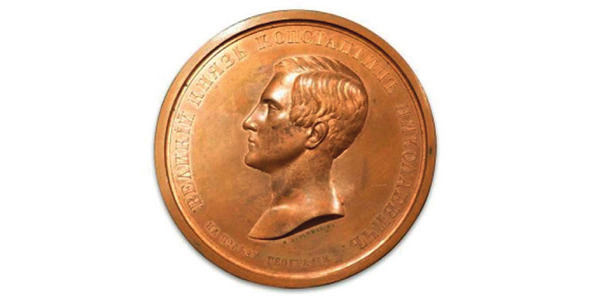
In addition, without his participation in the Collegium of the Naval General Staff, as well as a talented strategy for mining the Baltic, the WWI would have ended in defeat for Russia already in the summer of 1915, when Germany brought down all the power of its fleet. And thanks to his command of Black Sea Fleet (he was the youngest admiral among the warring countries) the Turks forever forgot the entrance to Black Sea. If only for this reasons the monument must be preserved.
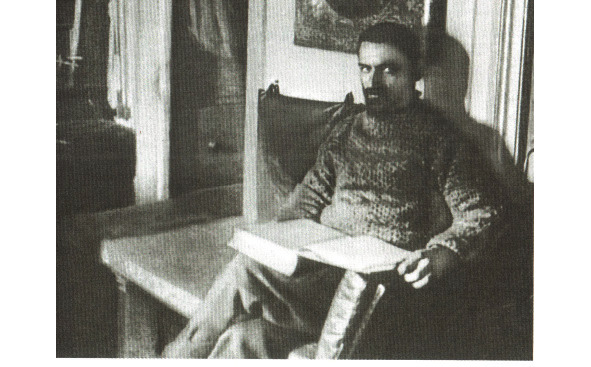
But we will continue our journey and visit the territory of Monastery of Icon of Our Lady of the Sign, where there is a small but famous cemetery, which was almost completely destroyed after the creation of the first hydro-airport in the history of Siberia in 1928 on the Angara River. Our Lady of the Sign Cathedral itself, built back in 1762. But during the years of Soviet power it was taken to the aircraft workshop, and the territory of the cemetery was razed to the ground. Despite all the changes, it was possible to find and even preserve some of the most significant burials.
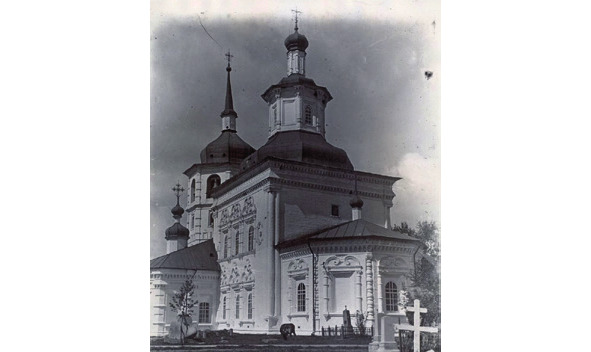
Right at the entrance we meet the grave of the Decembrist V.A. Bechasnov — one of the few who stayed in Siberia of his own will after the amnesty. Left in the corner of the front garden you can see the grave of N.A. Panov — the only of the rebels who led the grenadier detachment to Senate Square on December 14, 1825 and surrounded the Winter Palace — he was 22 years old at that moment. Opposite him was buried P.A. Mukhanov, who was not a participant in the main events of the Decembrist Uprising but paid for the intention to kill the emperor by exile to Siberia. He only a little did not live up to the amnesty and before his wedding after moving to a settlement in Irkutsk.
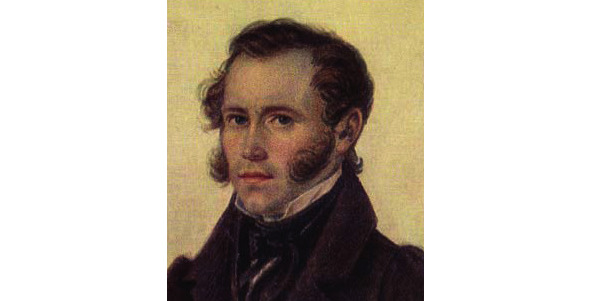
The Decembrists may be treated differently, but the feat of their wives can be considered only in one way. Only 11 women (out of 23 marrieds) followed the 121 Decembrists exiled to Siberia. And the first of them was buried in this cemetery — this is Princess E.I. Trubetskaya. As the heir to one of the richest families of France, she was the wife of Colonel S.P. Trubetskoy — the manque dictator of the Russian Republic and the head of the uprising. She did not live less than two years before the amnesty and died in Irkutsk in 1854 — the whole Irkutsk buried her. The feat had a miraculous effect on this woman: being childless in health, she gave birth to her first child only here in Siberia — that was her daughter Alexandra, and then six more children. Three of them rest next to their mother under a small stone cube behind the gravestone to E.I. Trubetskaya. Her husband managed to return to central Russia after the amnesty, and soon moved the four surviving children out of here.

In addition to old burials, you can see modern ones here. Further on the left we will see the place where the buried “conscience of Russia” V.G. Rasputin who is the last “village writer”, public figure and creator of the festival “Days of Russian spirituality and culture ‘Shining of Russia’”. He died in Moscow on March 14, 2015, several hours before his 78th birthday. Novels of V.G. Rasputin “Farewell to Matera”, “Live and Remember”, “French Lessons” are immortal works of Russian literature and are taught in the school curriculum. This writer has no connections with the famous family friend of the Russian Emperor Nicholas II G.E. Rasputin, since he was killed in 1916 and his only son Dmitry died in 1933 and could not be the father of this man of letters, who was born in 1937.
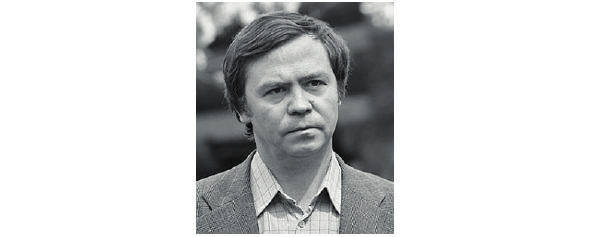
Behind the grave of the famous writer, you can see a strange monument resembling a tree trunk with a chopped off top, branches and roots. This is the grave of the honourary citizen of Irkutsk, the 1st guild merchant of Shuya and Irkutsk, the gold miner and tea trader V.F. Kolygin, who left no heirs, since all of his five children died in infancy.
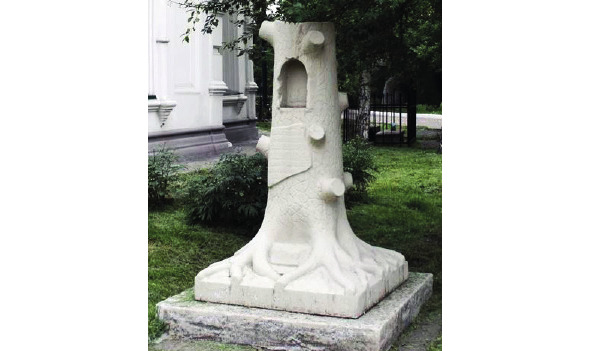
Time to visit the Cathedral of Our Lady of the Sign, which is one of two churches in Irkutsk, where the original iconostasis has been partially preserved. The church was re-painted, but already by Soviet artists, what immediately catches the eye.
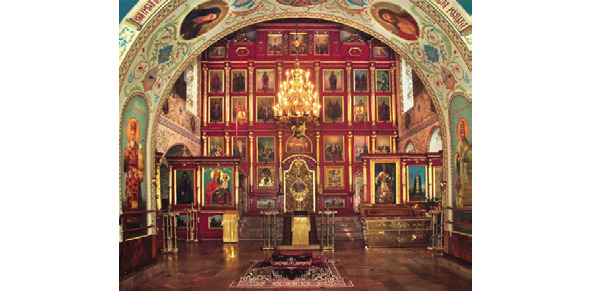
The main treasure of the monastery is a feretory with the relics of St. Innocent of Irkutsk, the first saint of Eastern Siberia. He was born not here, but in Malorussia (modern Ukraine) near Chernigov in 1682. He received a good theological education, which helped him, after being tonsured a monk, to get a teaching position at the first school at the history of Russia called Slavic-Greek-Latin Academy in 1714. There he met Peter I, who took him to his fleet on the ship “Samson”.
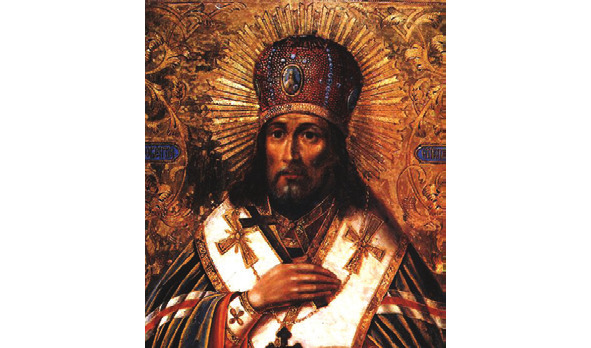
Fate brought Innocent to Siberia when he was sent as part of the embassy to China in 1721. However, due to a number of circumstances, he stayed here forever and was appointed as the first bishop of Irkutsk and Nerchinsk. Having held this post for less than five years, Innocent died and was buried at the Ascension Monastery near Irkutsk in 1731, but various miracles at his the burial place, as well as lifetime exploits led to the canonization of the bishop in 1804.
His relics have disappeared at the devastation of the monastery in 1921. Only in 1989, in one of the museums of Yaroslavl it was discovered in the exhibition under the label “Siberian mummy”. St. Innocent’s relics were solemnly returned to Irkutsk in 1990, and still they are here in a feretory to the right of the main aisle.
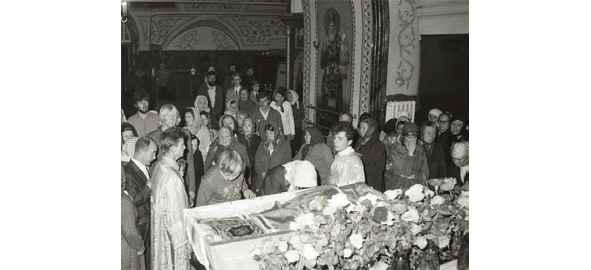
Having got acquainted with the interior of the church, let’s complete the circle along the temple. Here at the apse is the resting place of the “Russian Columbus” G.I. Shelikhov, who founded the first Russian settlement in North America on August 3, 1784.
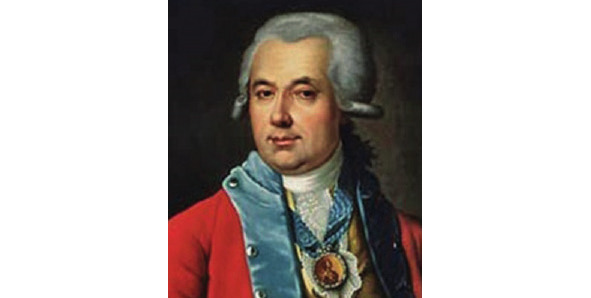
The tombstone on his grave appeared only in 1800, five years after his death by the highest will of the Russian Emperor Paul I. The epitaphs were compiled by the great Russian poets G.R. Derzhavin and I.I. Dmitriev. On the monument you can see Aleutian masks, anchors, ship logs, masts and an image of death, which so early interrupted the life of that great explorer (died at the age of 46). In addition, on the monument, right under the bas-relief of G.I. Shelikhov, you can see a medal and a sword, which he was awarded in 1788 personally from Empress Catherine the Great. But the support of the state ended there, and the merchant was left to himself in development of a new territories. Perhaps that led to his early death.
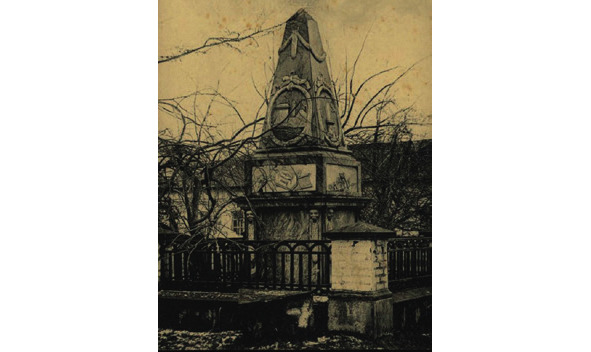
Opposite the grave of the great explorer, under a white cube with a cross, there is an unnamed burial, where the imperishable body of Ioann Smirnov, the last archbishop of Irkutsk and Verkholensk, has been buried since 1930. Initially, he was buried in the Epiphany Cathedral, but after the handover of the temple to the bakery factory, the relics had to be reburied.
Бесплатный фрагмент закончился.
Купите книгу, чтобы продолжить чтение.
